Está chegando a hora de terminar essa viagem linda, que começou pelo Canadá, passou por Nova York e vai finalizar na capital dos Estados Unidos. Te convido agora a Vivenciar as Aulas de História em Washington D.C., vamos conhecer a famosa Casa Branca, o Capitólio e até entrar numa cápsula espacial…
Vale lembrar que essa viagem foi um pouco antes da pandemia, por isso não estamos usando máscaras (então não se preocupe que não estamos desrespeitando as regras), mas mesmo que você tenha que seguir os protocolos de segurança, aproveite ao máximo o que Washington D.C. pode te proporcionar!!!
Vamos começar nosso tour?
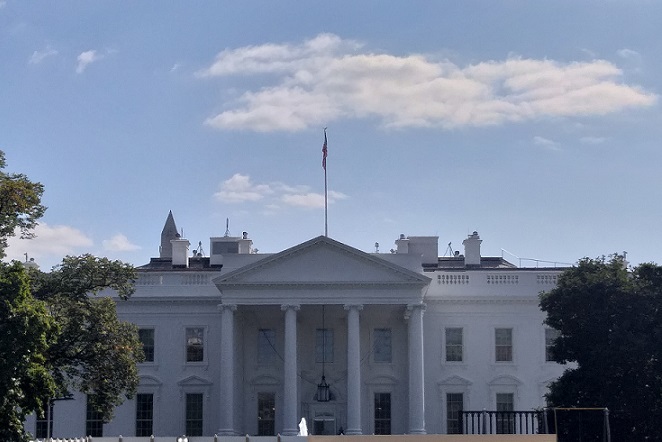
A distância entre Nova York e Washington D.C. é cerca de 360 km e aproximadamente 4h de ônibus ou carro, nós optamos por excursão em ônibus turístico, para já ir aprendendo durante a viagem, mas você pode escolher outras opções, inclusive se hospedar em Washington porque tem muita coisa para conhecer e lugares para visitar por lá. Mas se preferir, também é possível fazer um bate e volta de Nova York. De qualquer forma, não deixe de incluir esse passeio no seu roteiro.
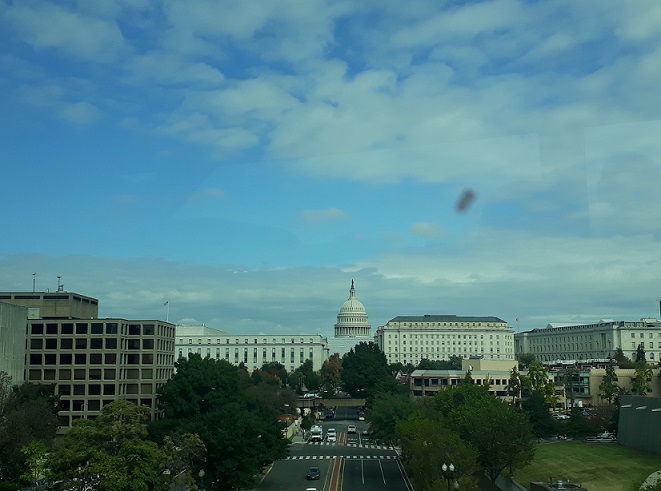
Você deve estar se perguntando o motivo de “D.C.” depois de Washington, não é mesmo? Já vou te explicar, trata-se da abreviação de “Distrito de Colúmbia” (ou “District Of Columbia”), que é onde a cidade está localizada, e recebeu esse nome em homenagem ao descobridor da América: Cristóvão Colombo. Além disso, “Colúmbia” refere-se a um antigo nome poético e à personificação feminina dos Estados Unidos. E falando em homenagem, a cidade de “Washington” recebeu esse nome para prestigiar o primeiro Presidente norte-americano George Washington!
Lembrando que foi ele o responsável pela escolha, em 1790, do lugar onde Washington seria construída para se tornar a capital dos Estados Unidos (assim como, futuramente, aconteceria no Brasil, com a construção de Brasília), sendo que o projeto ficou sob a responsabilidade do engenheiro Pierre-Charles L´Enfant e a inauguração se deu em 1800.
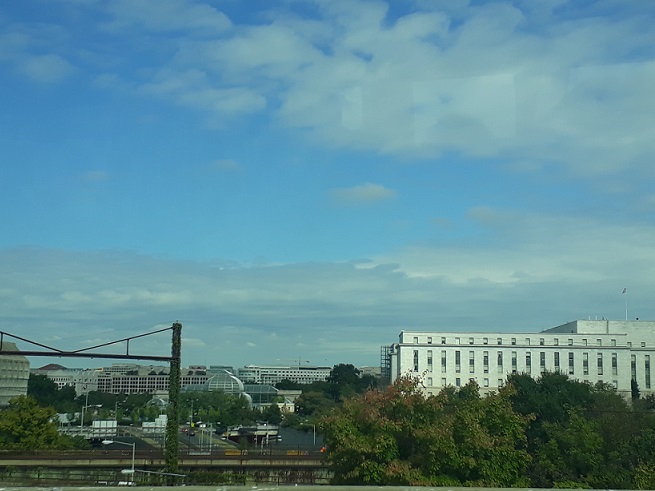
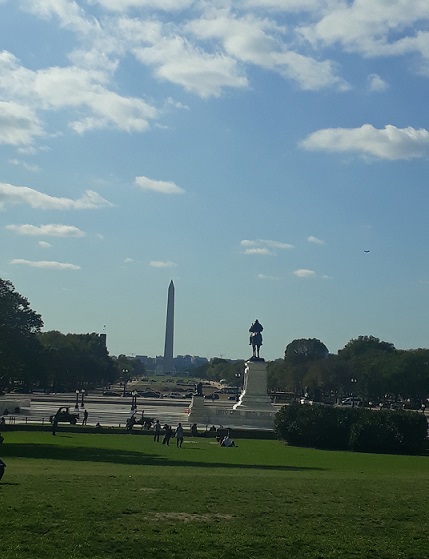
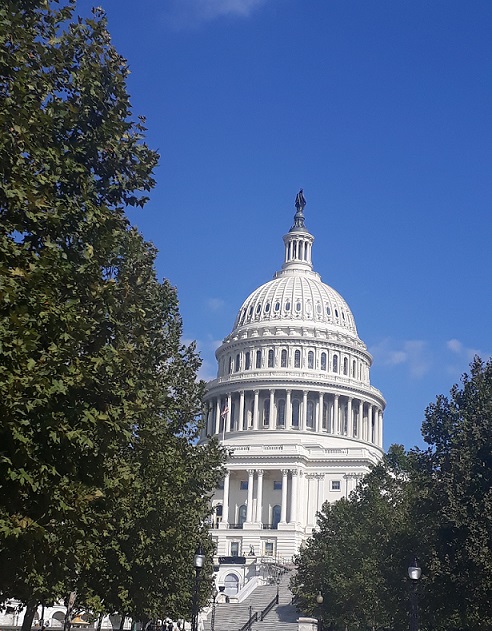
A cidade de Washington D.C. fica às margens do Rio Potomac (que na linguagem indígena significa “Aquilo que nos é entregue”) e é chamado pelo moradores locais de “Nation’s River” (ou Rio da Nação). Do outro lado do rio fica o Estado da Vírgínia e ao redor de Washington D.C. fica o estado de Maryland.
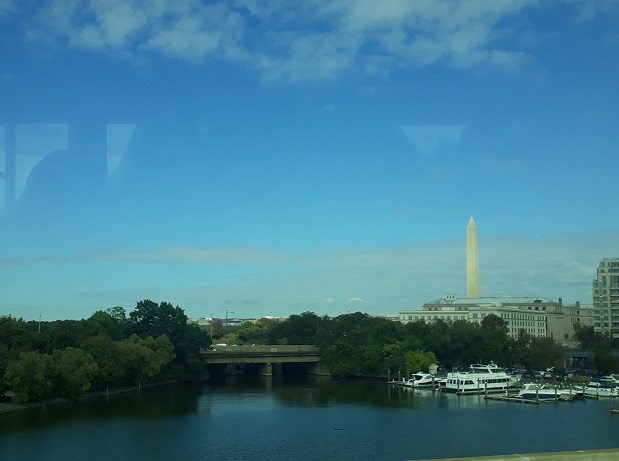
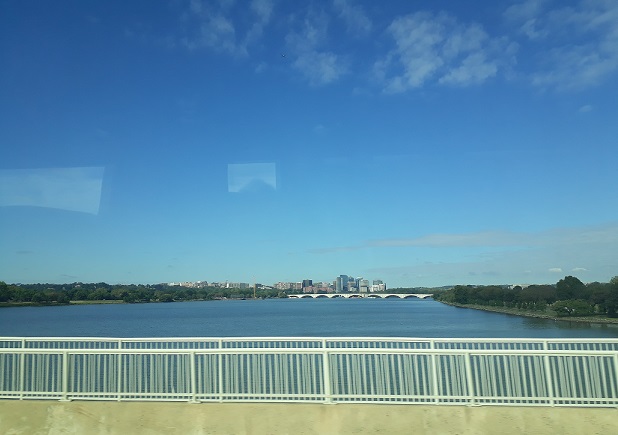
À medida que fomos nos aproximando de Washington D.C., avistamos o famoso Pentágono, que é a Sede do Departamento de Defesa dos Estados Unidos (e que na verdade fica do outro lado do Rio Potomac, no Condado de Arlington, no Estado da Virgínia). O prédio foi inaugurado em 1943, sendo projetado pelo arquiteto George-Bergtrom e construído por John McShain, numa área de cerca de 600 mil m², sendo considerado um dos maiores edifícios de escritórios do mundo. O Pentágono é citado em vários filmes, é o símbolo das Forças Armadas dos Estados Unidos e também foi vítima do atentado terrorista de 11 de setembro de 2001, no qual foi alvejado por um Boeing 757, que o destruiu parcialmente e matou 125 pessoas que estavam no edifício e mais 64 que estavam no avião. Esse atentado ocorreu no mesmo dia do que destruiu as Torres Gêmeas em Nova York, local onde hoje está o Memorial e Museu Nacional 11 de Setembro em homenagem às vítimas, se você ainda não viu ou quer rever nossa visita ao Museu e saber mais detalhes é só acessar: https://cadaviagemumabagagem.com/na-iluminada-e-poderosa-nova-york-dia-3/
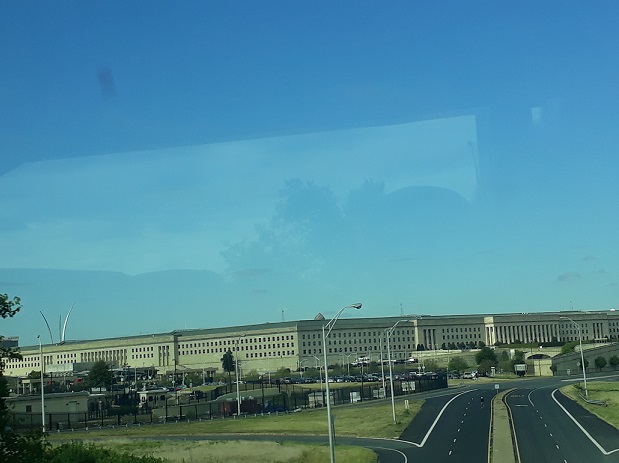
Passamos para o outro lado do Rio Potomac, no Condado de Arlington, no Estado da Virgínia, para visitarmos o “Arlington Nacional Cemetery” (ou Cemitério Nacional de Arlington), que é o maior e mais tradicional cemitério militar dos Estados Unidos, onde se encontram enterrados mais de 400 mil veteranos de guerra e seus familiares, incluindo vítimas das duas Grandes Guerras Mundiais, Guerra Fria, Guerra do Vietnã, entre outros conflitos.
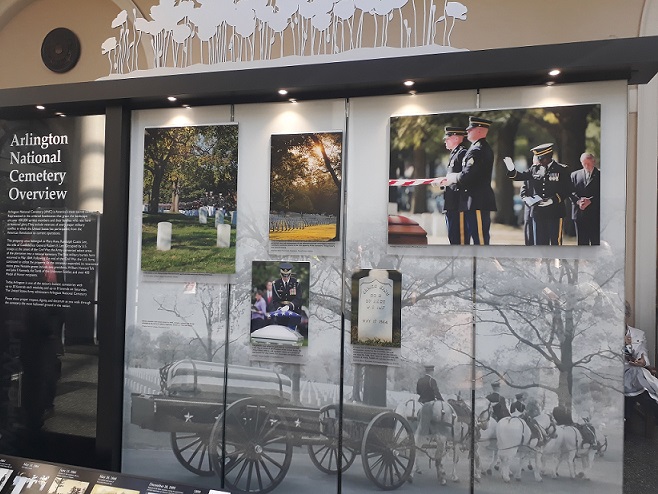
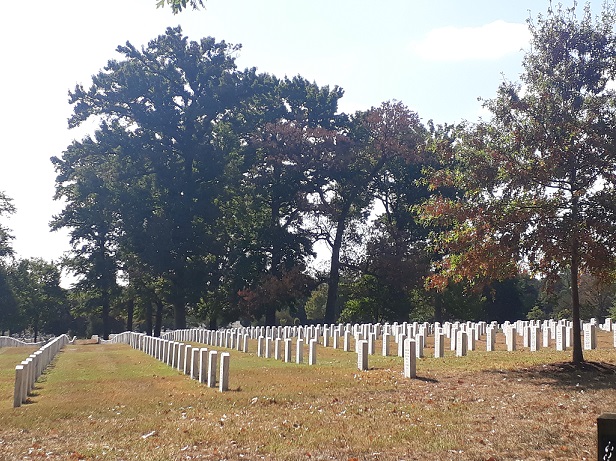
O Cemitério Nacional de Arlington foi inaugurado em 1864 e é muito visitado tanto por turistas, quanto por pessoas que querem prestar homenagem aos falecidos. Entre os lugares mais visitados do cemitério estão a Tumba do Soldado Desconhecido, que homenageia os soldados não identificados da Primeira e Segunda Guerras Mundiais, Guerra da Coréia e do Vietnã e é permanentemente guardado por sentinelas. E o outro lugar muito procurado, que tivemos a oportunidade de conhecer, foi o Túmulo do Ex-Presidente John Kennedy e de Jacqueline Kennedy, onde encontra-se acesa uma “chama eterna” e onde também estão enterrados dois filhos dele.
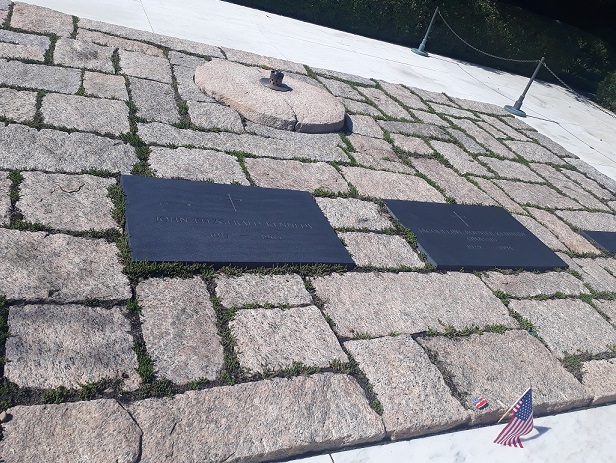

Se você quiser saber mais detalhes e informações sobre o Cemitério Nacional de Arlington é só acessar o site: https://www.arlingtoncemetery.mil/
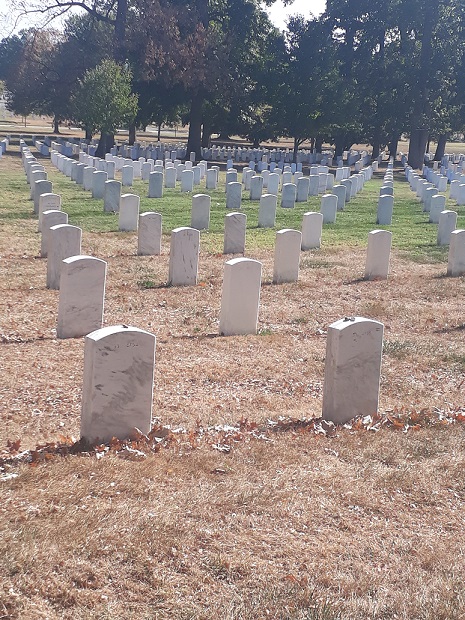
Para desanuviar um pouco esse clima triste por conta da visita ao cemitério, vamos conhecer o “Washington Monument” (ou Monumento de Washington), que é o famoso Obelisco, cuja altura chega a 169m, sendo considerada a mais alta estrutura de pedra maciça do mundo.
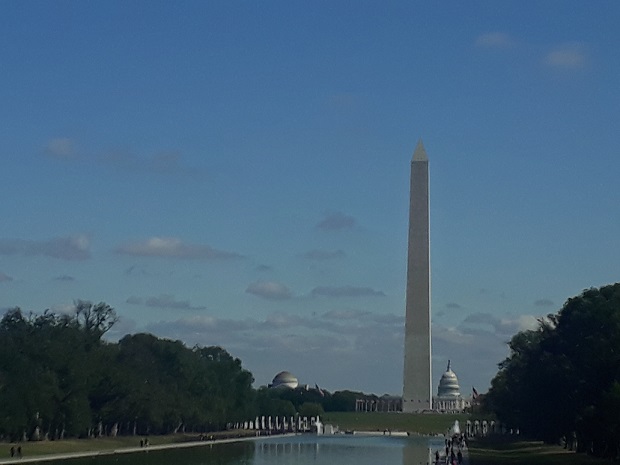
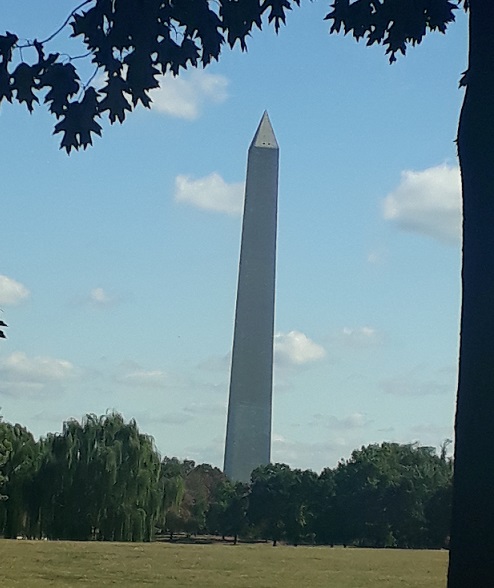
O “Washington Monument” ou Obelisco foi feito para homenagear George Washington, com o projeto de Robert Mills, que foi finalizado por Thomas Casey em conjunto com Engenheiros do Exército dos Estados Unidos. A construção se deu em duas fases: uma primeira privada (de 1848 a 1854) e uma segunda, pública (de 1876 a 1884) e a inauguração ocorreu em 1885 e já passou por vários processos de restauração desde então.
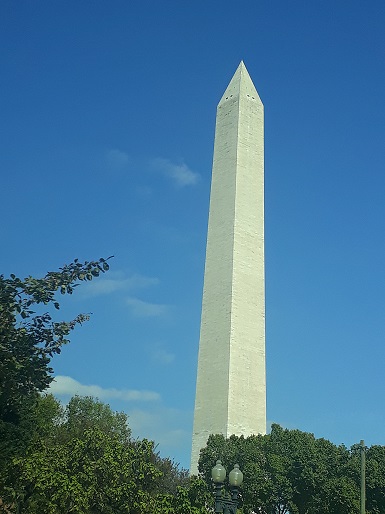
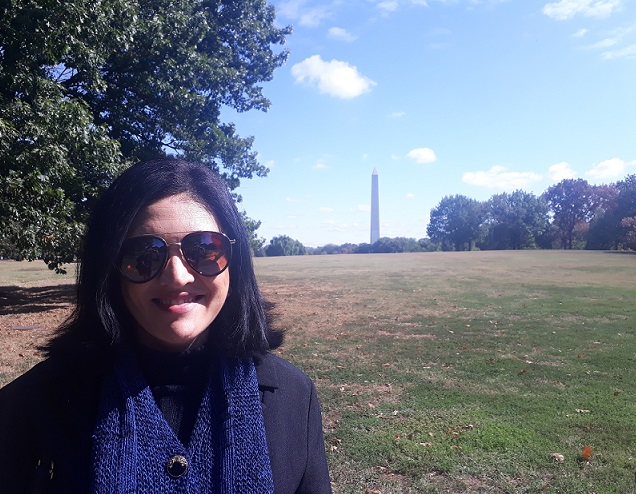
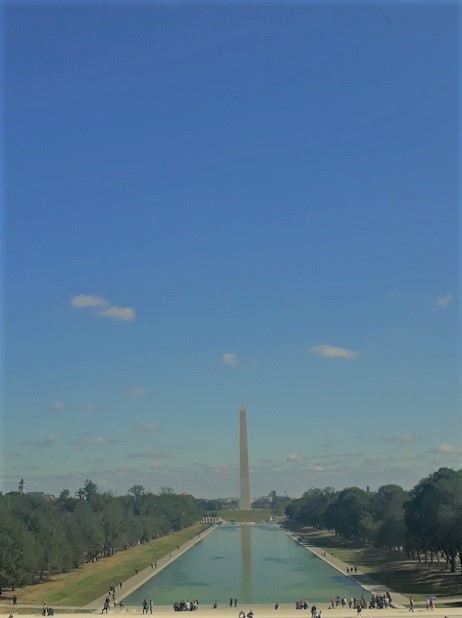
O Obelisco foi construído com mármore, granito e arenito e seu reflexo forma uma imagem lindíssima no Espelho D’Água do Constitution Gardens. Para saber mais informações é só acessar: https://www.nps.gov/wamo/index.htm
Falando em “Constitution Gardens”, vale dizer que ele é um Parque Nacional que fica entre o Obelisco e o Lincoln Memorial, ocupando uma área de cerca de 200 mil m² e que foi criado em 1976 em homenagem ao Bicentenário da Revolução Americana. Não tem como visitar o parque e não se encantar por esse lindo Espelho D’Água!!!
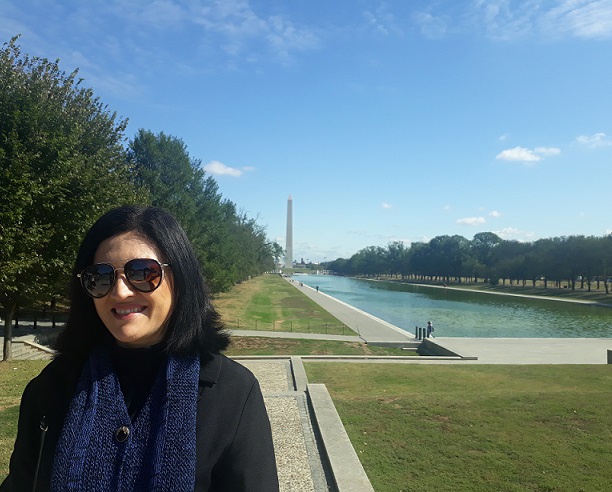
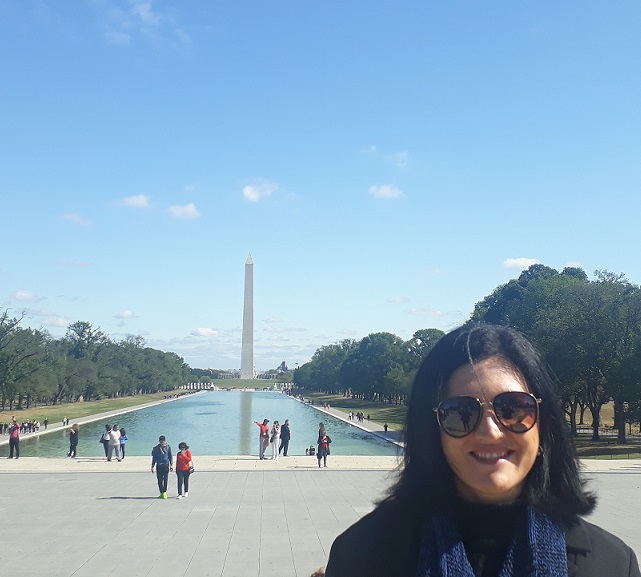
Dentro do Constitution Gardens, também tivemos a oportunidade de visitar o “Vietnam Veterans Memorial” (ou Monumento aos Veteranos do Vietnã), que foi construído em 1982 para homenagear os veteranos da guerra do Vietnã e é composto por três partes: “Vietnam Women’s Memorial” (em homenagem às mulheres), “Three Servicemen Statue” ou Estátua dos Três Militares (obra de Frederick Hart representando um soldado branco, um negro e um hispânico) e o “Vietnam Veterans Memorial Wall ou Muro do Memorial aos Veteranos do Vietnã (que foi projetado pela arquiteta Maya Lin e consiste num muro em mármore negro com 75m de comprimento, no qual estão inscritos os nomes de todos os soldados dos Estados Unidos que morreram na Guerra do Vietnã). Mais informações estão disponíveis no site: https://www.nps.gov/vive/index.htm
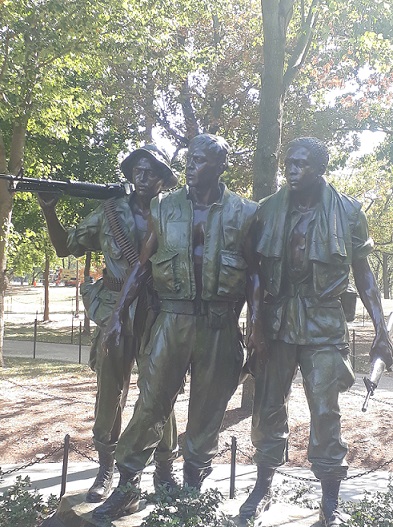
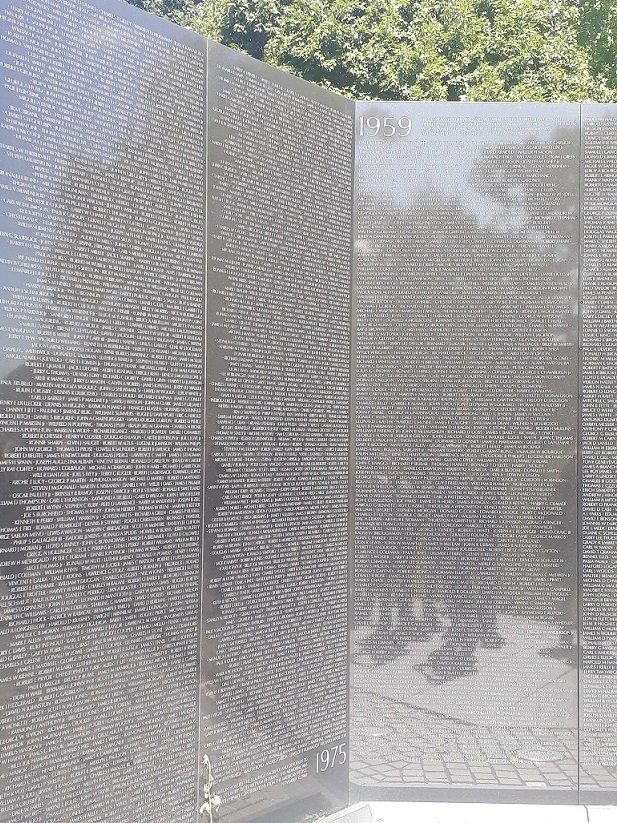
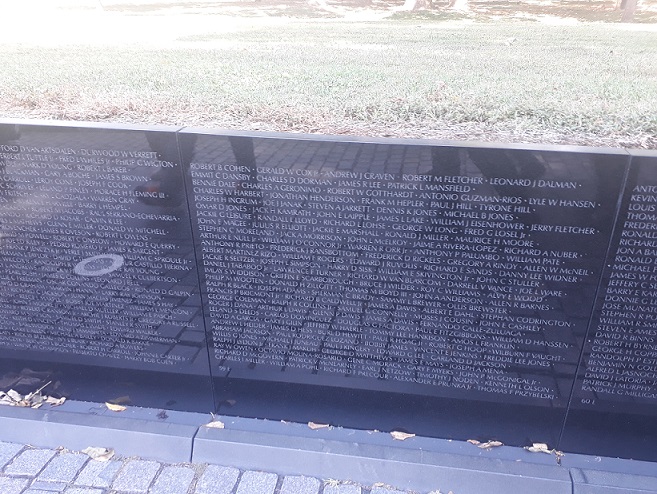
E do outro lado do Constitution Gardensfica o Lincoln Memorial, que foi inaugurado em 1922 para homenagear o 16º Presidente dos Estados Unidos, Abraham Lincoln, que foi assassinado em 1865. O projeto foi do arquiteto Henry Bacon e inspirado no templo Partenon de Atenas (Grécia) para fazer uma conexão entre um defensor da democracia e o berço da mesma. O Memorial é realmente muito bonito!! Ele foi construído em mármore e tem 30m de altura, 57m de comprimento e 36m de largura.
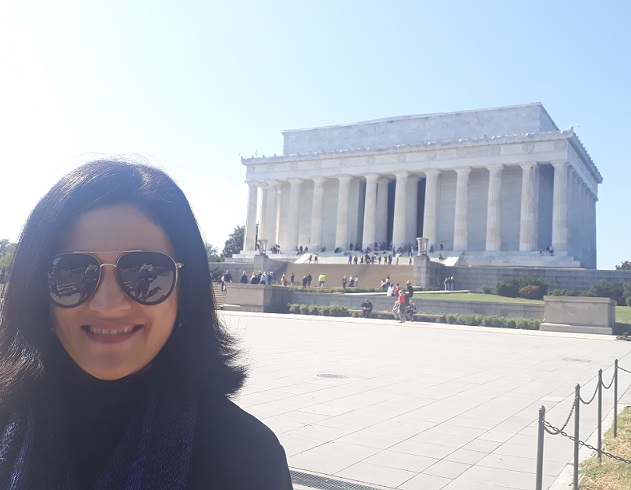
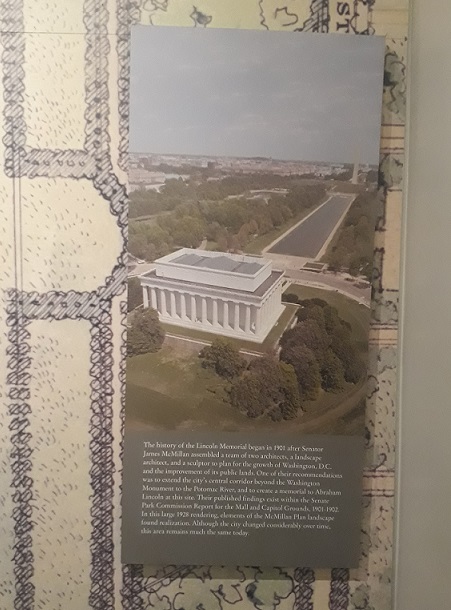
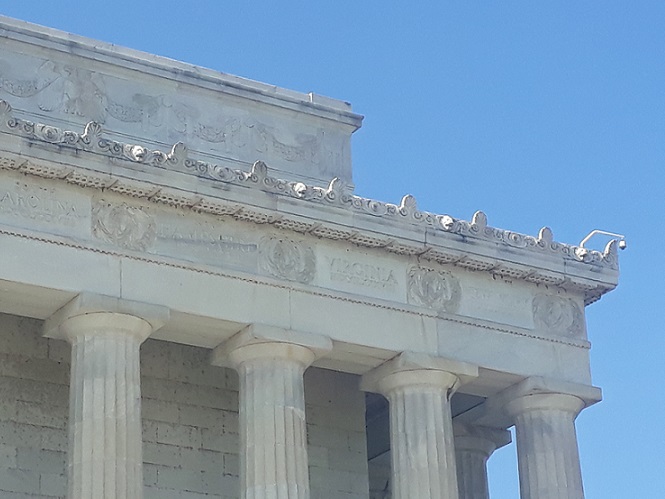
Ao visitar o interior do Lincoln Memorial, vamos aprendendo mais sobre os ideais de luta, liberdade e emancipação de Lincoln, como foi sua contribuição para a nação e também detalhes sobre a construção do Memorial. E se você quiser saber mais informações é só acessar o site: https://www.nps.gov/linc/index.htm
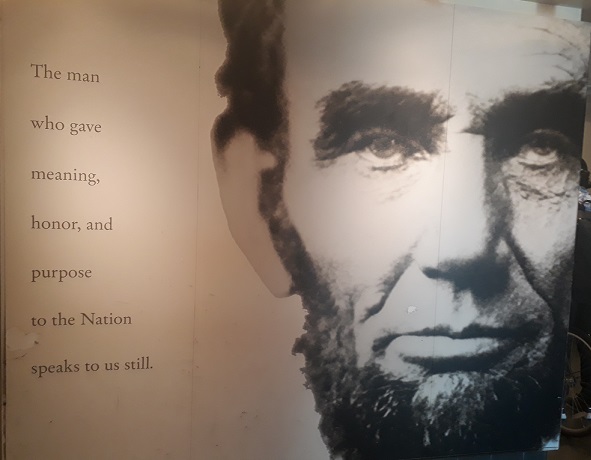
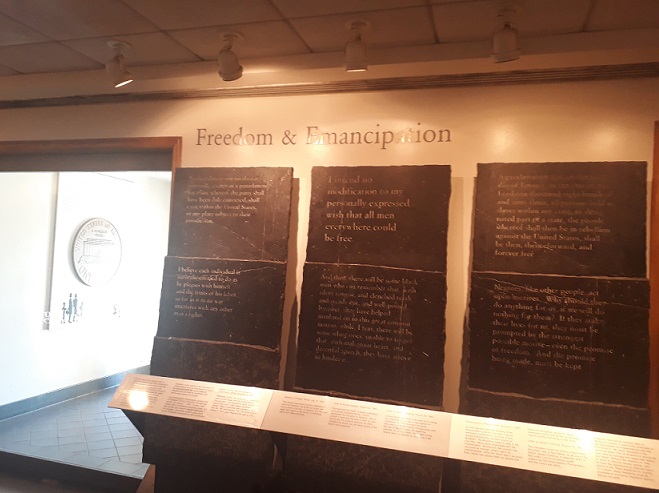
Mas calma que a visita não acabou ainda, vamos conhecer agora o destaque do Lincoln Memorial, que fica no salão central e é Estátua de Abraham Lincoln, com aproximadamente seis metros de altura, apresentando o Ex-Presidente dos Estados Unidos sentado com uma fisionomia de contemplação.
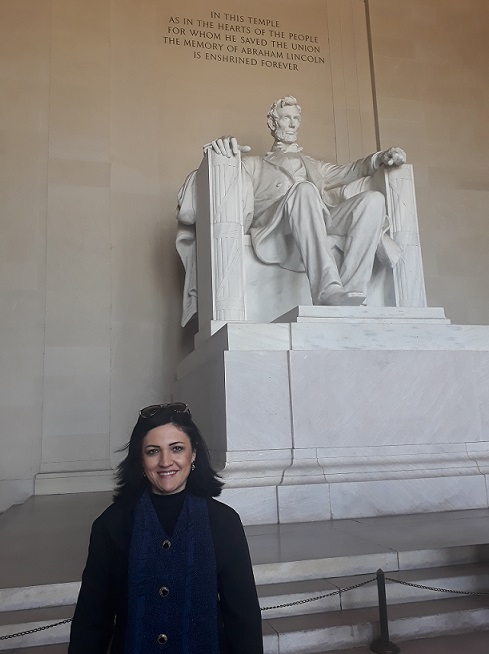
O projeto da Estátua de Abraham Lincoln partiu do escultor Daniel Chester French, que queria retratar a força e garra de Lincoln em conjunto com sua natureza compassiva, fazendo isso, simbolicamente, através das mãos, deixando uma fechada e a outra aberta. A execução desse projeto ficou por conta dos irmãos Piccirilli, mas sempre sob a supervisão do autor, e demorou quatro anos para ser concluída. Ela foi construída em mármore, tem cerca de 6 metros de largura, pesa 175 toneladas e fica sobre um pedestal, também de mármore. Mais detalhes sobre a estátua estão no site: https://www.nps.gov/linc/learn/historyculture/statue.htm
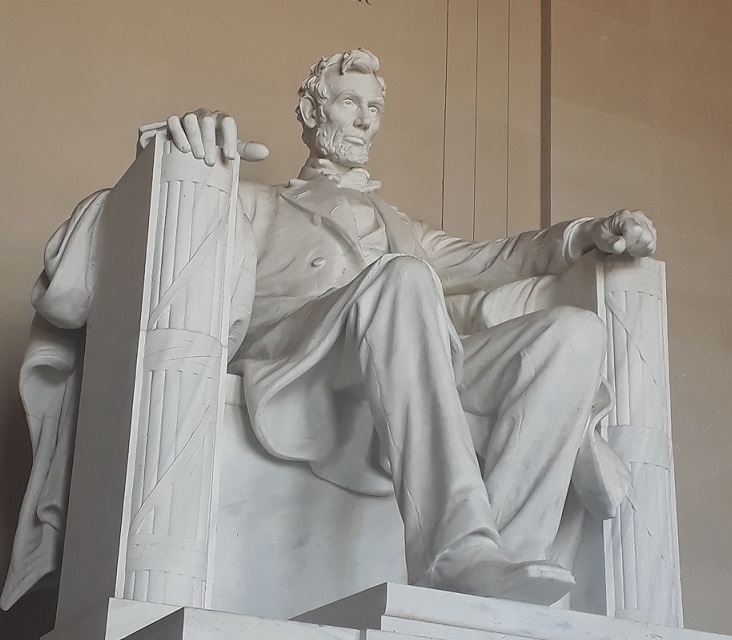
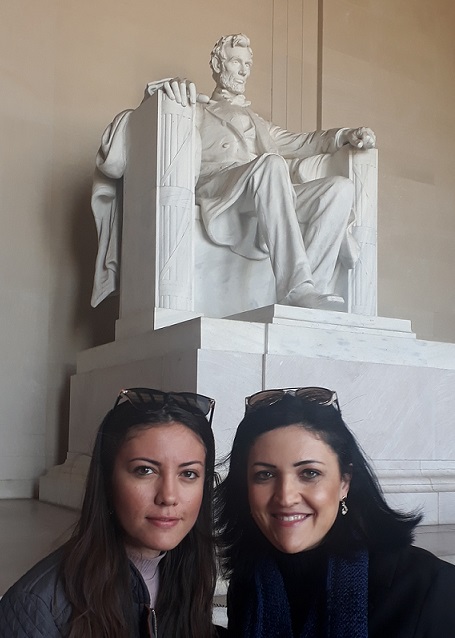
Saindo dali, fomos visitar o “Korean War Veterans Memorial” (ou Memorial dos Veteranos da Guerra da Coreia), feito para homenagear os combatentes que serviram na Guerra da Coreia. O Memorial foi inaugurado (ou dedicado, como eles preferem chamar) em 27 de julho de 1995 (data do 42º aniversário do armistício que encerrou a guerra).
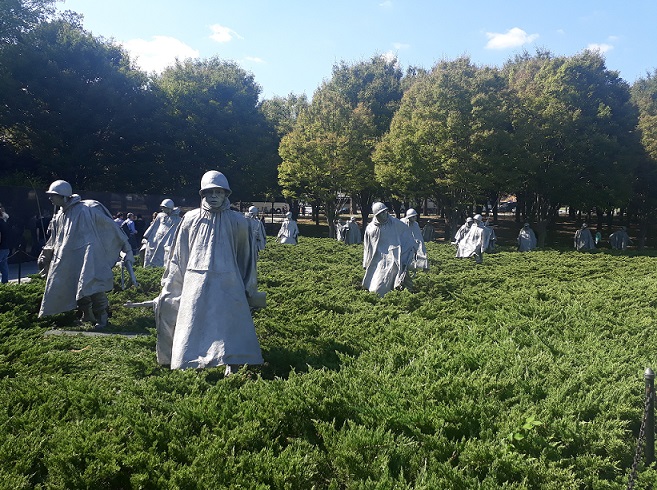
O Memorial dos Veteranos da Guerra da Coreia possui uma parte triangular onde encontram-se 19 estátuas representando um Esquadrão Americano em Patrulha, compondo a obra “The Column” (ou “A Coluna”). As estátuas são de aço inoxidável, foram criadas pelo veterano da Segunda Guerra Mundial Frank Gaylord e os arbustos onde eles estão e alguns obstáculos pelo meio do caminho simbolizam o relevo irregular Correia.
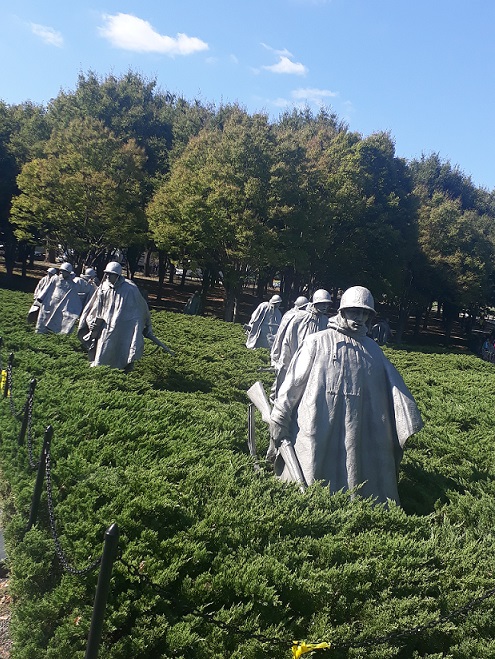
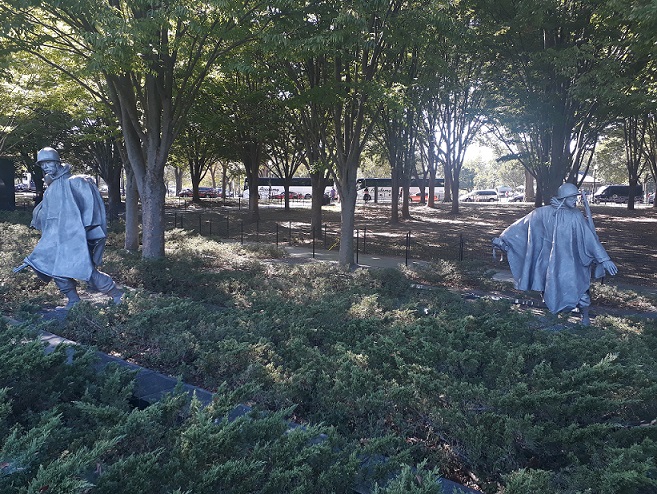
Bem perto das estátuas fica “The Mural Wall” ou “O Mural“, feito de granito preto, que foi criado por Louis Nelson e onde foram gravadas com jatos de areia imagens de soldados e outras pessoas envolvidas na Guerra da Coreia, bem como de equipamentos. O trabalho é belíssimo e a mistura entre as estátuas refletidas e os rostos gravados no granito causam um efeito surpreendente.
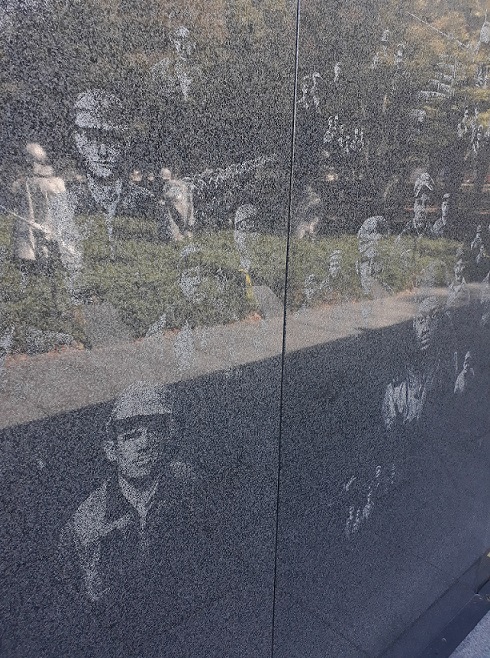
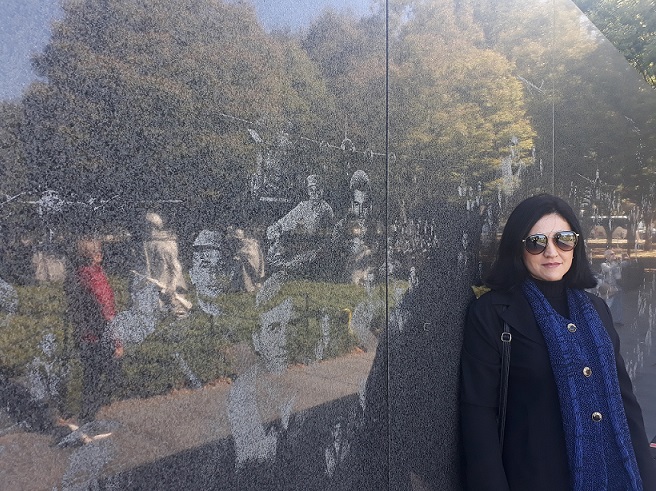
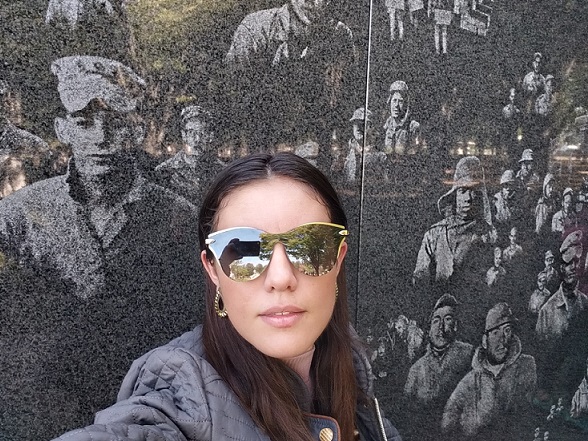
Também compõem o Memorial dos Veteranos da Guerra da Coreia, o “Muro das Nações Unidas”, que é um muro menor que o Mural, onde estão listados os 22 países das Nações Unidas que enviaram tropas e apoio médico para a Guerra e a “Pool of Remembrance” (ou Piscina da Lembrança)¸que é um tanque raso, rodeado por um bosque, e que traz várias inscrições, entre elas o número de soldados mortos na guerra. Para saber mais detalhes desse memorial é só acessar: https://www.nps.gov/kowa/index.htm
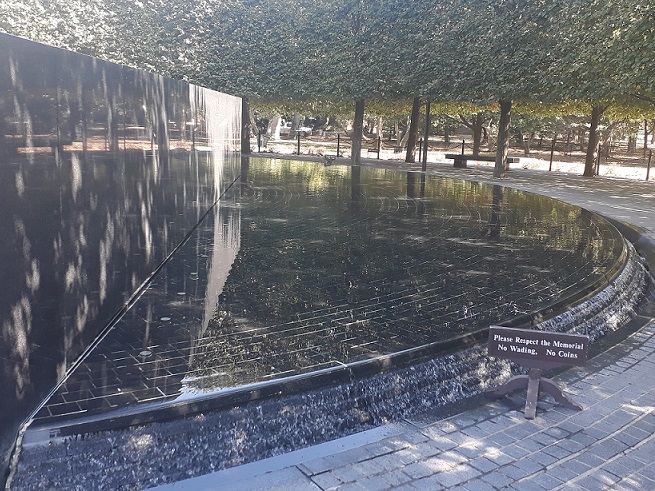
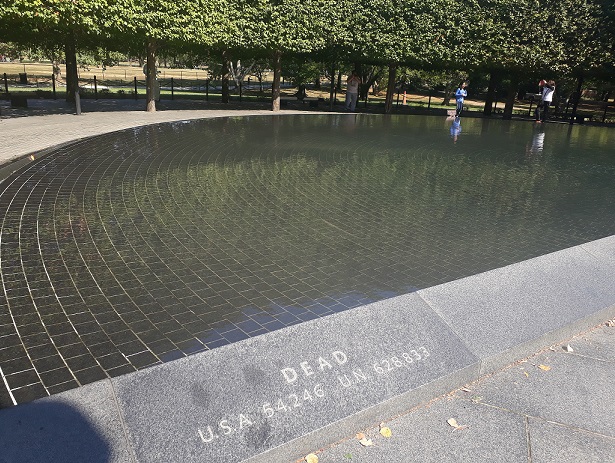
Sei que você deve estar sentindo falta de um lugar e se perguntando quando irei falar de um dos principais cartões postais de Washington D.C., não é mesmo? Então, anime-se porque chegou a hora de conhecermos a famosa White House ou Casa Branca!!!
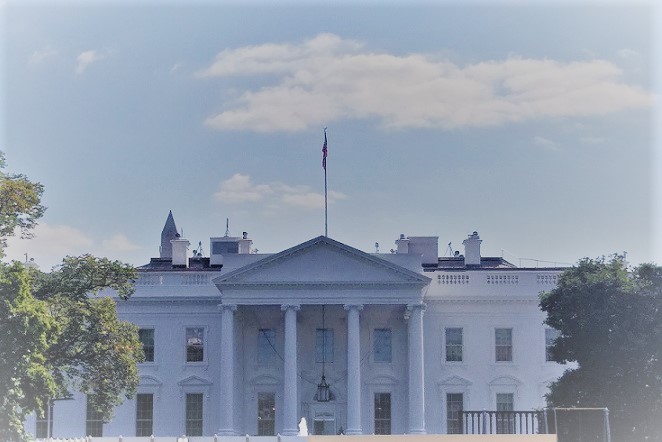
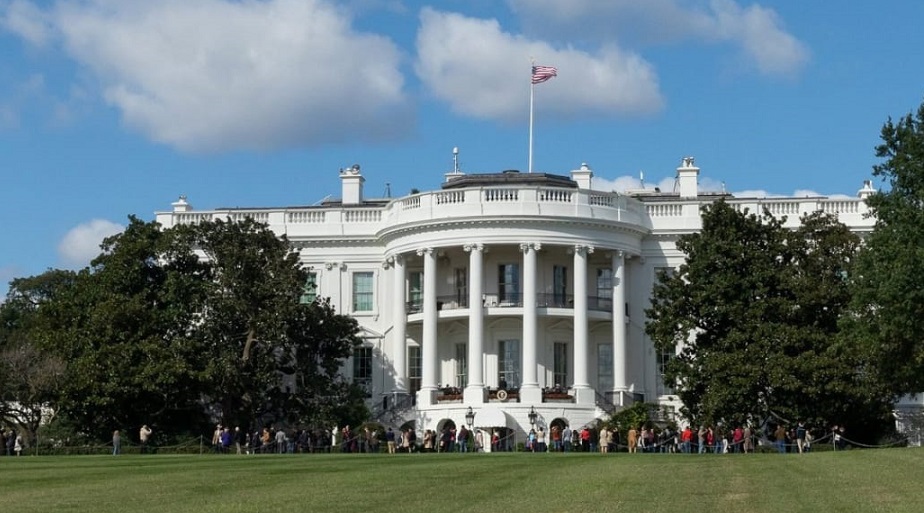
A Casa Branca é a residência oficial do Presidente dos Estados Unidos e também a sede do Poder Executivo do país. Ela foi construída entre 1792 e 1800 e o projeto foi do irlandês James Hoban, em estilo georgiano, sendo ampliada posteriormente até chegar ao modelo atual. Em 1814, a Casa Branca sofreu um incêndio provocado por um ataque britânico durante a Guerra Anglo-Americana de 1812, mas foi reconstruída na sequência. E é um dos pontos turísticos mais badalados do país, chegando a cerca de três mil visitantes por dia, afinal não tem como ir a Washington D.C. e não passar pela Casa Branca.
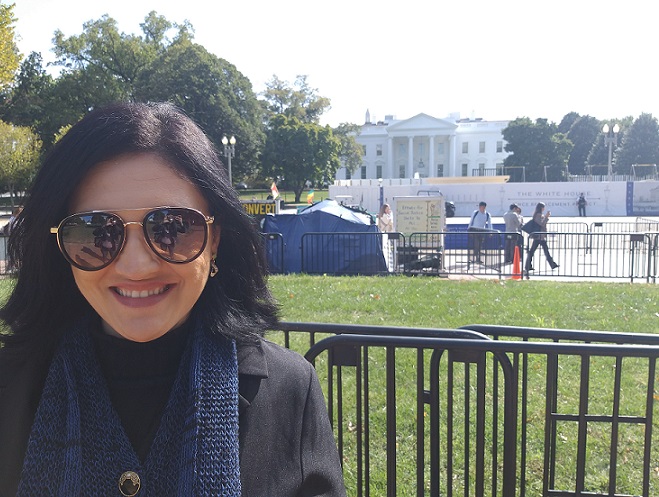
Mas as modificações na Casa Branca não param por aí, o Ex-Presidente Donald Trump mandou aumentar o tamanho das grades, por isso esses tapumes que aparecem nas fotos. E por ser um dos lugares mais poderosos do mundo, também é alvo de constantes manifestações e protestos em seu entorno. Para saber mais informações sobre a Casa Branca é só dar uma olhadinha no site: https://www.whitehouse.gov/
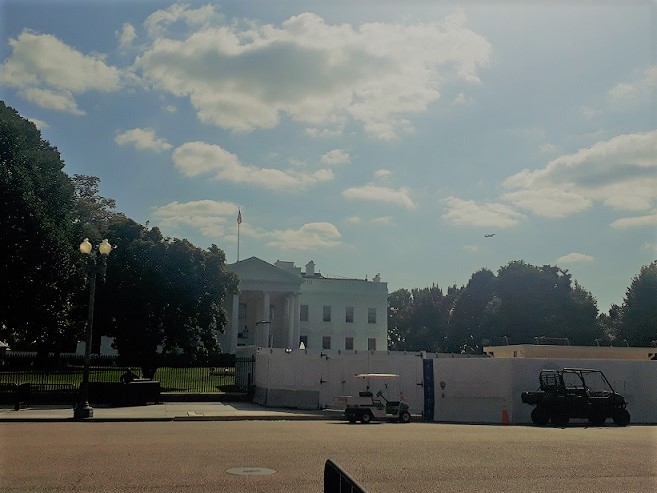
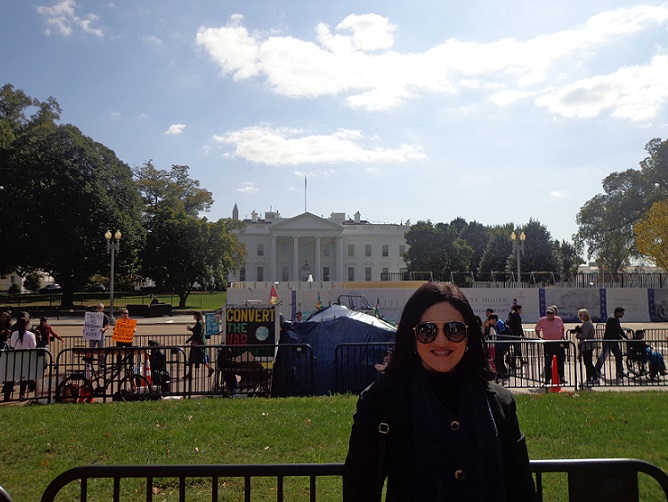
E bem perto da Casa Branca, a cerca de 1,6 km, fica outro prédio que é cartão-postal de Washington D.C.: o U.S. Capitol / United States Capitol ou Capitólio dos Estados Unidos, que é belíssimo e com certeza vale a pena incluir no seu roteiro.
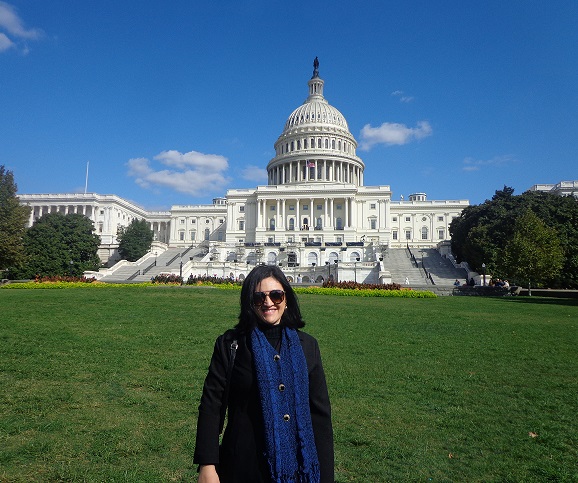
O Capitólio é o centro legislativo do Estados Unidos, onde ocorrem as reuniões do Congresso, que é composto pelo Senado e pela Câmara dos Representantes. Sua construção adota o estilo neoclássico e começou em 1793, sendo que a primeira parte foi inaugurada em 1800 e houve mais expansão em 1850. O projeto inicial foi de William Thornton, depois passou por alterações de Stephen Hallet, Benjamin Latrobe, Thomas U. Walter, entre outros arquitetos. Atualmente, o Capitólio é formado por uma cúpula central e por duas alas: a norte (onde fica o Senado) e a sul (onde fica a Câmara dos Representantes) e acima da cúpula tem uma estátua em bronze chamada de “Estátua da Liberdade”.
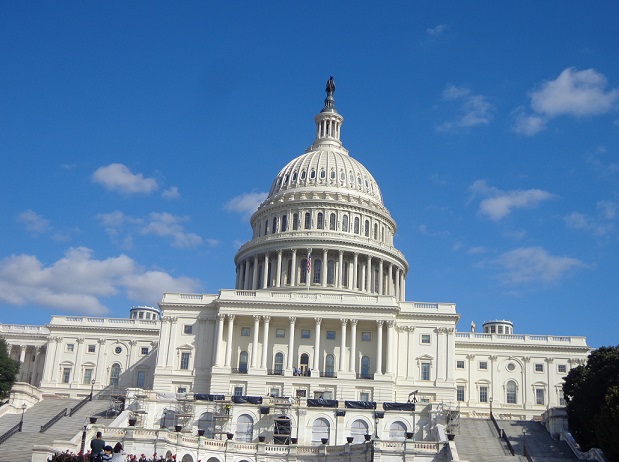
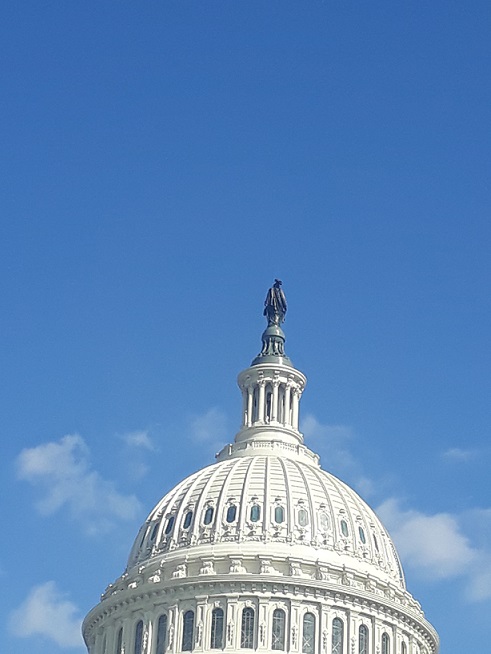
O Capitólio é o símbolo da democracia no país e já foi alvo de vários atentados, desde explosões de bombas, passando por ataques armados a seguranças, escapando por pouco de um ataque em 11 de setembro de 2001 (que só não ocorreu porque o Voo 93 de United Airlines, que seguia em direção ao Capitólio, caiu antes na Pensilvânia, após os passageiros tentarem assumir o controle do avião ao entrarem em confronto com os terroristas) e chegando ao mais recente, que foi em 06 de janeiro de 2021, quando apoiadores do Ex-Presidente Donald Trump invadiram o Capitólio em sinal de protesto à vitória eleitoral do atual presidente dos Estados Unidos, Joe Biden.
Para saber maiores informações sobre o Capitólio é só acessar: https://www.visitthecapitol.gov/
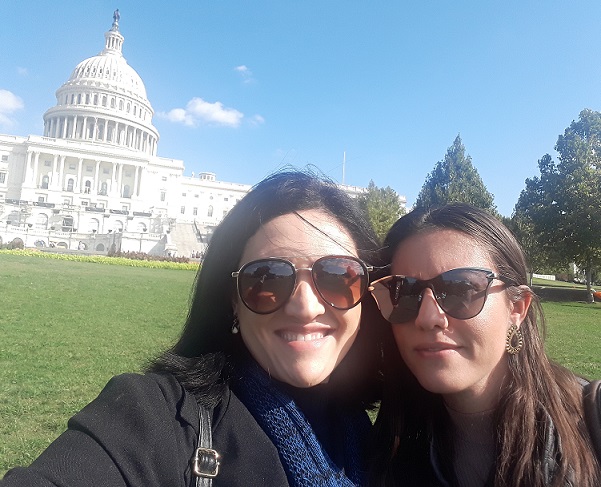
Vamos agora para nossa última parada em Washington D.C., que foi no National Air and Space Museum ou Museu Nacional do Ar e do Espaço, que como o próprio nome diz é dedicado ao ambiente aéreo e espacial e possui uma das maiores coleções de aeronaves e espaçonaves (sendo a maioria originais) do mundo.
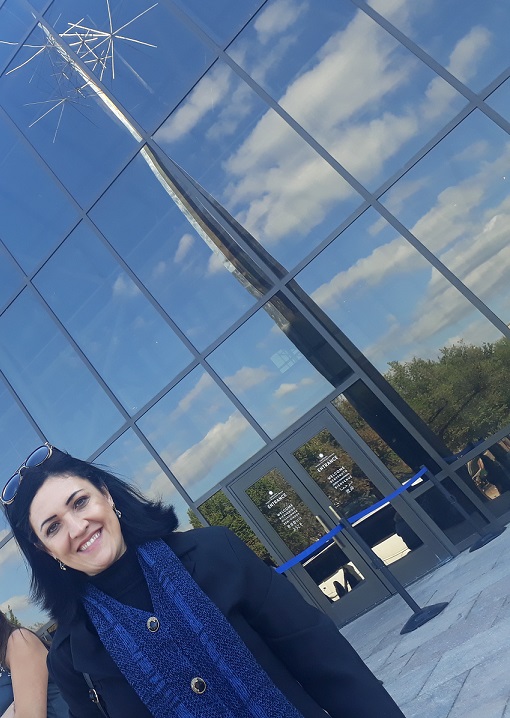
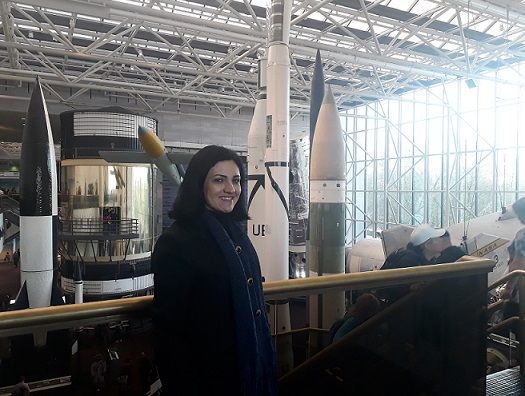
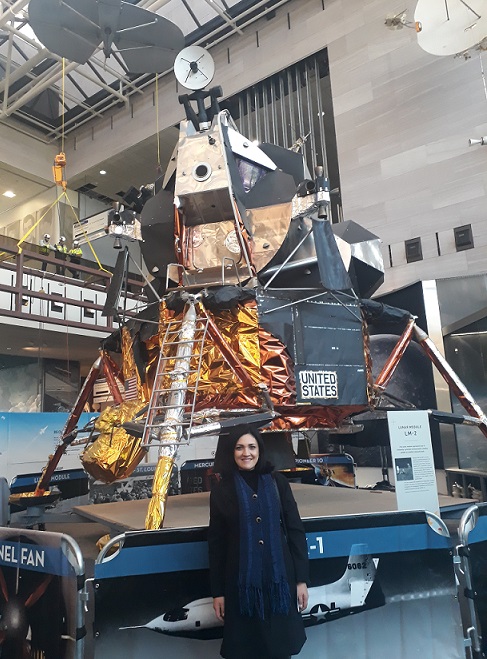
O Museu Nacional do Ar e do Espaço faz parte do Instituto Smithsoniano, foi inaugurado em 1976, com projeto do arquiteto Gyo Obata e conta atualmente com um acervo de cerca de 50000 artefatos, que vão enchendo nossos olhos, à medida que vamos percorrendo os espaços do Museu.
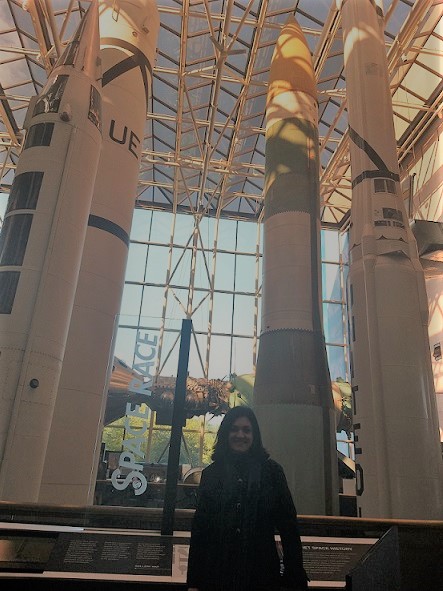
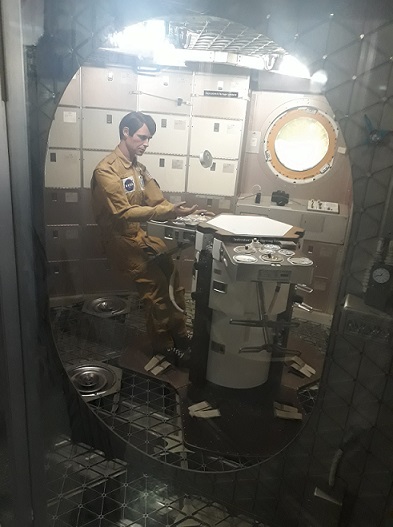
Astronautas 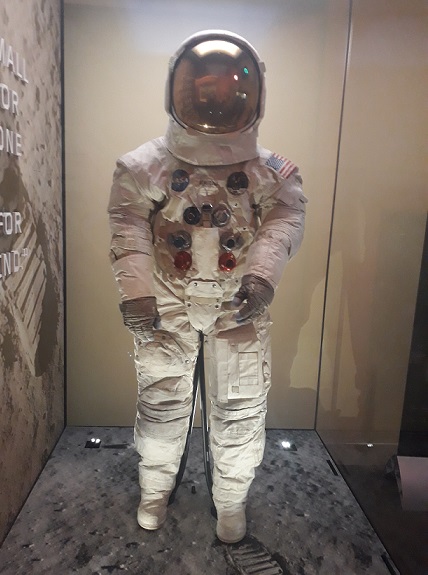
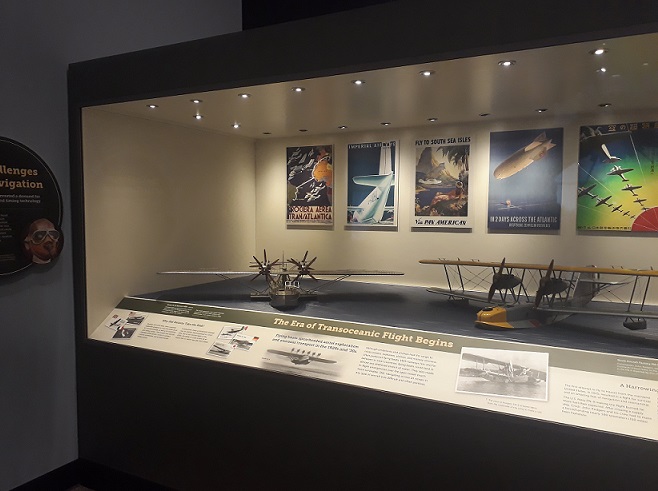
E aviões 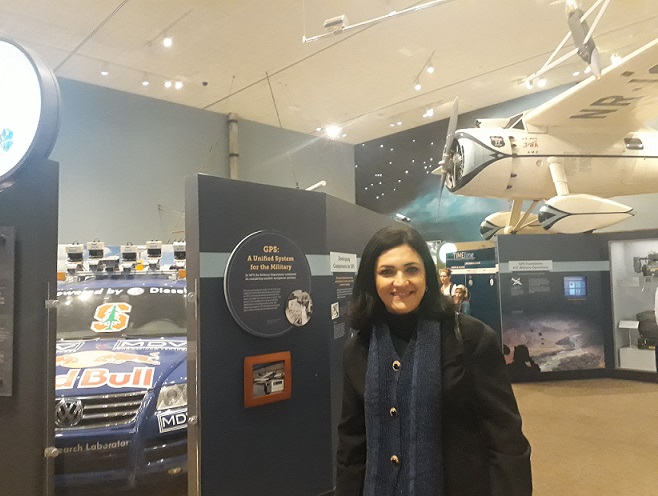
Nessa visita ao Museu Nacional do Ar e do Espaço tivemos a oportunidade de conhecer a espaçonave Mercury Frienship 7, usada na Missão que permitiu ao astronauta John Glenn, ser o primeiro norte-americano a voar na órbita da Terra. Também conhecemos a Gemini IV da Missão que realizou a primeira caminhada espacial norte-americana com o astronauta Ed White. E o Viking Lander, que foi um aterrizador, enviado para estudar a superfície de Marte.
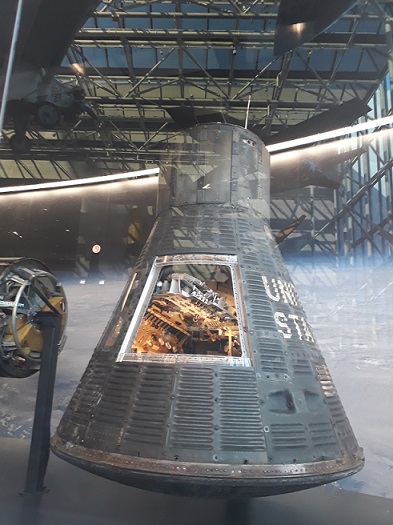
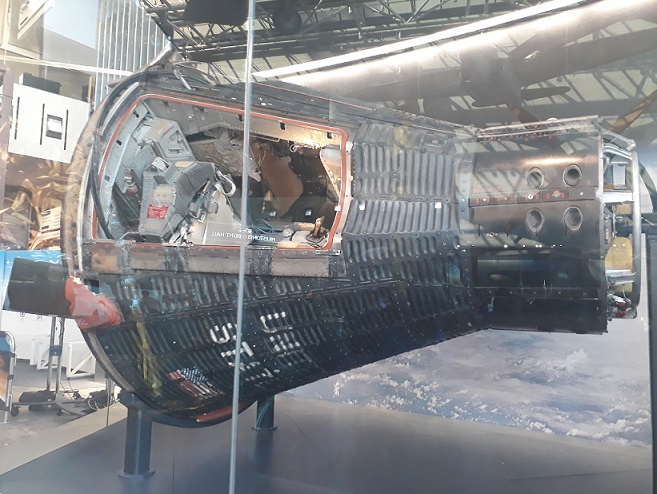
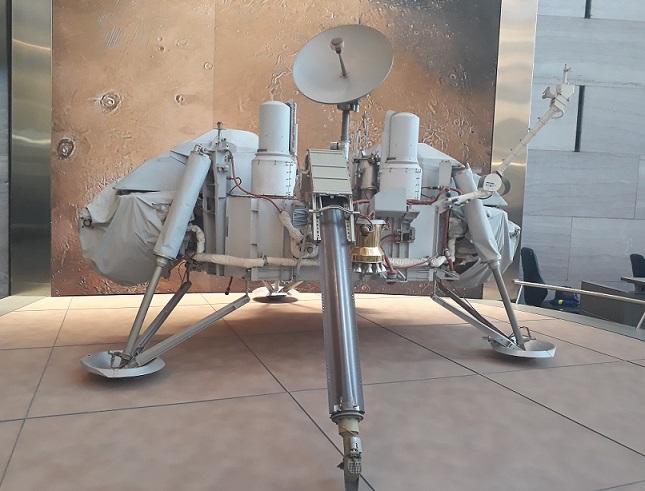
Uma das partes que mais me chamou a atenção no Museu Nacional do Ar e do Espaço foi entrar numa Cápsula Espacial e ver como é a cama¸ que fica suspensa na parede e tem acessórios para “prender” os astronautas. Já imaginou a sensação de ter que dormir com os braços e pernas amarrados para evitar de ficar flutuando pela nave? A comida de astronauta também é muito interessante, os armários, o banheiro, enfim, é um aprendizado maravilhoso.
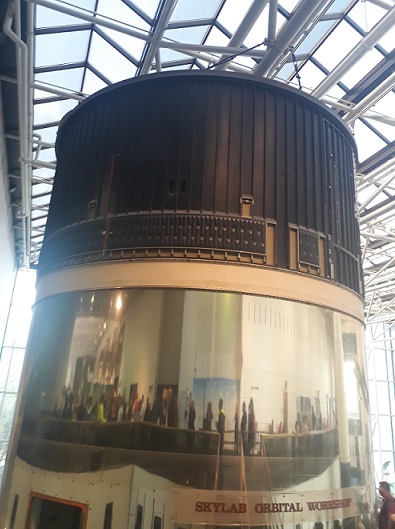
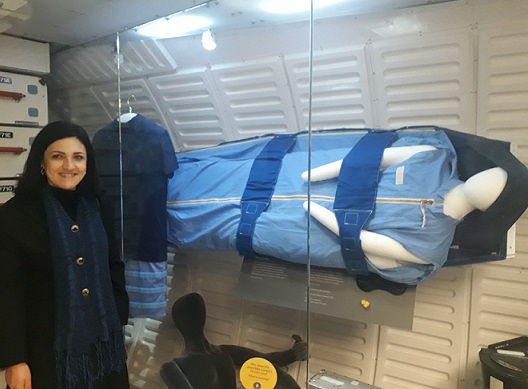
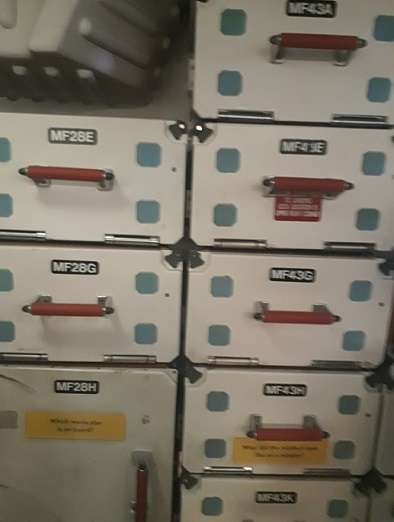
Armários 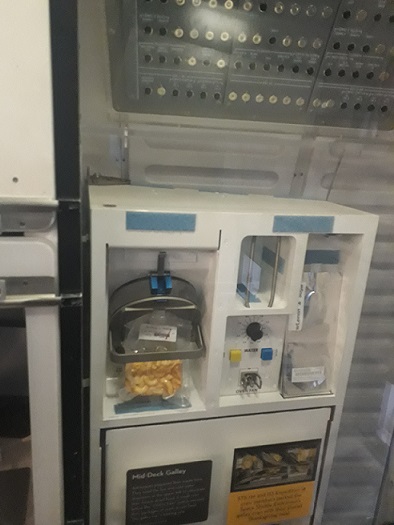
Comida Espacial
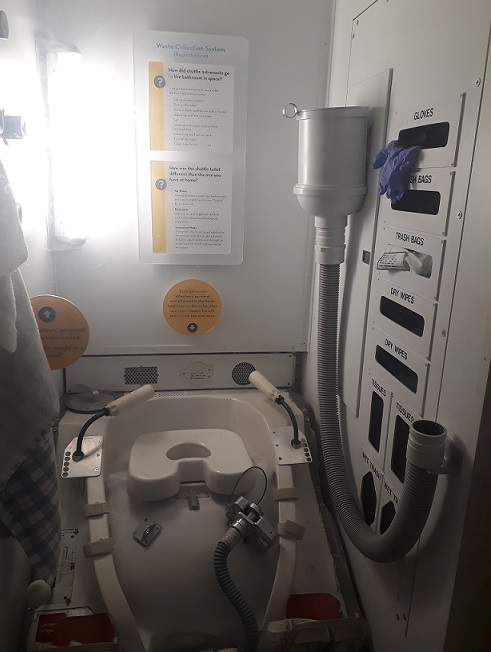
O Museu Nacional do Ar e do Espaço também tem uma sala que nos transporta para os primórdios da Aviação…
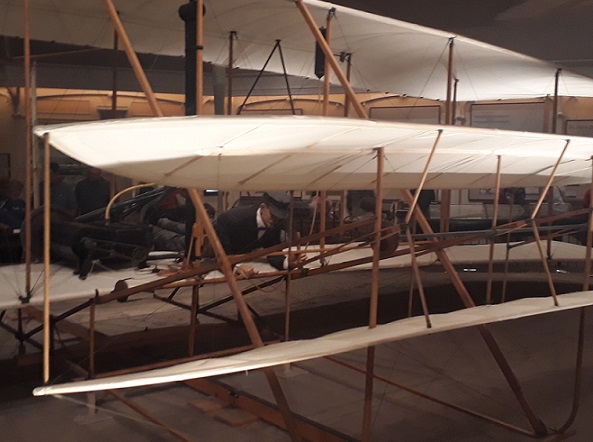
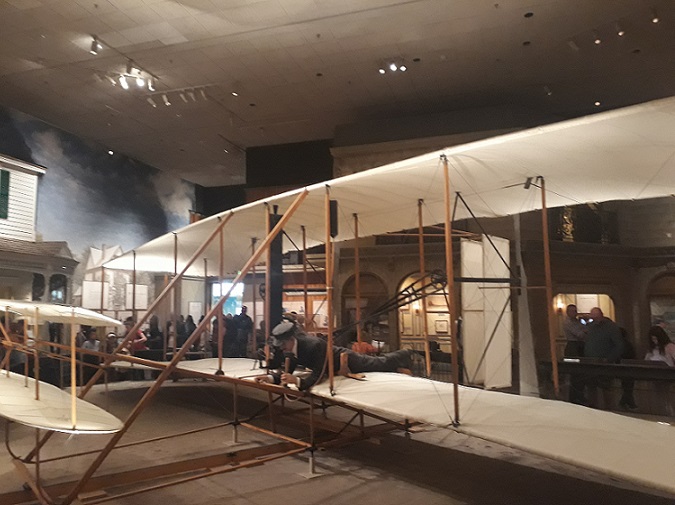
Lembrando que o National Air and Space Museum fica em 600, Independence Ave SW e para saber maiores informações é só acessar: https://airandspace.si.edu/ . E ainda é possível fazer um tour virtual para você sentir como é a visita por lá, acessando o link: https://artsandculture.google.com/streetview/national-air-and-space-museum-washington-dc-second-floor/mAGIjNwvdyVBNA?sv_lng=-77.01985119124066&sv_lat=38.88814141871478&sv_h=157.8&sv_p=-13.299999999999997&sv_pid=7Tb8VlE8GxmLwjrXMB8XCw&sv_z=1
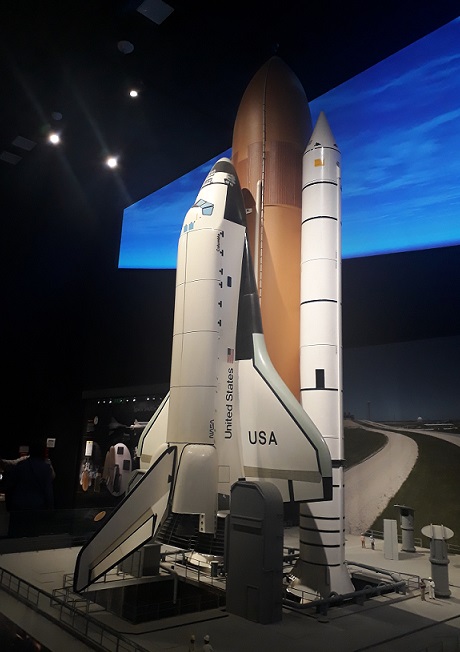
Nosso tour por Washington D.C. terminando por aqui… Agradeço de coração sua companhia!!! Se você não viu ainda ou quer recordar como foi essa viagem do começo ao fim é só clicar ao lado, na experiência que quer conhecer, desde o Canadá, passando por Nova York, até chegar ao passeio de hoje.
E lembrando que se você gostou desse post, compartilhe com seus amigos para que possam se divertir também, e siga nossas redes sociais para saber em primeira mão as novidades: Instagram (@cadaviagemumabagagem) e Facebook (https://www.facebook.com/cadaviagemumabagagem/ ) e se inscreva no nosso canal do Youtube (Cada Viagem uma Bagagem): https://www.youtube.com/channel/UC5Q29-MYuWjvPH__wWhF42A
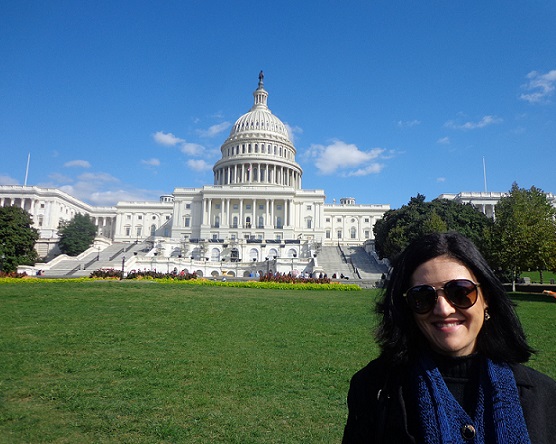
Experiencing History Classes in Washington D.C.
The time is coming to end this beautiful trip, which started in Canada, passed through New York and will end in the capital of the United States. Now I invite you to Experience History Classes in Washington D.C., we will visit the famous White House, the Capitol and even enter a space capsule…
It’s worth remembering that this trip was just before the pandemic, so we’re not wearing masks (so don’t worry we’re not breaking the rules), but even if you have to follow security protocols, make the most of what Washington D.C. can provide you!!!
Shall we start our tour?

The distance between New York and Washington D.C is about 223 miles and approximately 4 hours by bus or car, we opted for a touristic bus tour, to already learn while traveling, but you can choose other options, including staying in Washington because there is a lot to know and places to visit there. But if you prefer, it is also possible to make a roundtrip from New York. Anyway, be sure to include this tour in your itinerary.

You must be wondering why “D.C.” after Washington, right? I will explain it to you, it is short for “District of Columbia”, which is where the city is located, and was named after the discoverer of America: Christopher Columbus. In addition, “Columbia” refers to an old poetic name and the feminine personification of the United States. And speaking of homage, the city of “Washington” received that name to honor the first American President George Washington!
Remembering that he was responsible for choosing, in 1790, the place where Washington would be built to become the capital of the United States (just as in the future it would happen in Brazil, with the construction of Brasilia), and the project was under the responsibility of engineer Pierre-Charles L´Enfant and the inauguration took place in 1800.



The city of Washington D.C. is on the banks of the Potomac River (which in indigenous language means “What is given to us”) and is called by the locals Nation’s River. Across the river is the state of Virginia and around Washington D.C. is the state of Maryland.


As we got closer to Washington D.C., we spotted the famous Pentagon, which is the headquarters of the United States Department of Defense (and which is actually across the Potomac River in Arlington County, Virginia). The building was opened in 1943, being designed by the architect George-Bergtrom and built by John McShain, in an area of about 600 thousand m², being considered one of the largest office buildings in the world. The Pentagon is cited in several films, is the symbol of the United States Armed Forces and was also a victim of the September 11, 2001 terrorist attack, in which it was shot by a Boeing 757, which partially destroyed it and killed 125 people who were in the building and 64 more who were on the plane. This attack occurred on the same day as the destruction of the Twin Towers in New York, where the National September 11 Memorial and Museum is located today in honor of the victims, if you have not seen or want to review our visit to the Museum and learn more details is just access: https://cadaviagemumabagagem.com/na-iluminada-e-poderosa-nova-york-dia-3/

We went to the other side of the Potomac River, in Arlington County, in the State of Virginia, to visit the Arlington National Cemetery, which is the largest and most traditional military cemetery in the United States, where more than 400,000 war veterans and their families are buried, including victims of the two Great World Wars, Cold War, Vietnam War, among other conflicts.
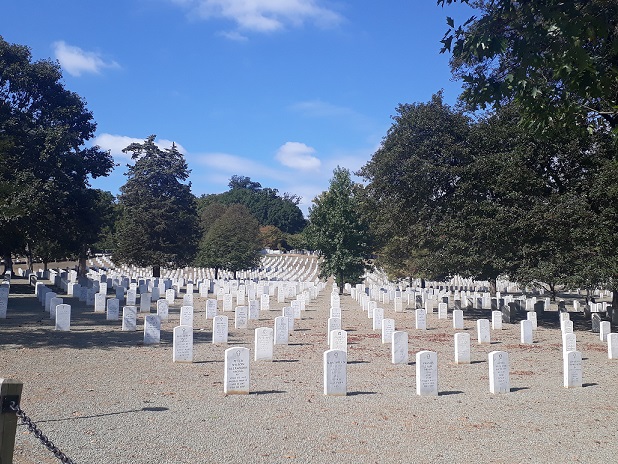

Arlington National Cemetery was opened in 1864 and is widely visited by tourists and by people who want to pay homage to the deceased. Among the most visited places in the cemetery are the Tomb of the Unknown Soldier, which honors unidentified soldiers from the First and Second World Wars, the Korean War and Vietnam and is permanently guarded by sentries. And the other much sought after place, which we had the opportunity to visit, was the Tomb of Ex-President John Kennedy and Jacqueline Kennedy, where an “eternal flame” is lit and where two of his children are also buried.


If you want to know more details and information about the Arlington National Cemetery just go to the website: https://www.arlingtoncemetery.mil/
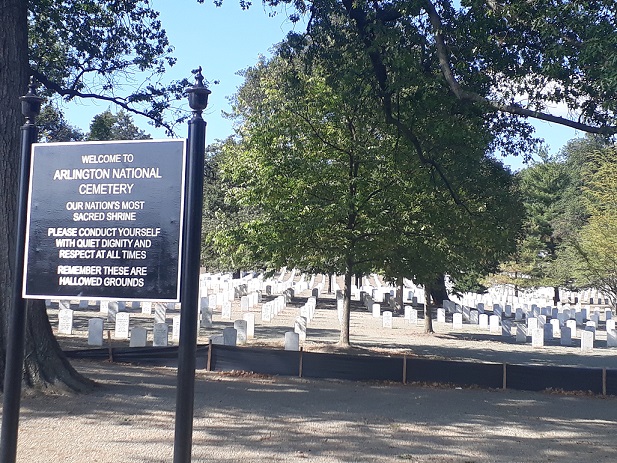
To clear up a little this sad climate due to the visit to the cemetery, we will visit the Washington Monument, which is the famous Obelisk, whose height reaches 555 ft, being considered the highest massive stone structure in the world.


Washington Monument or Obelisk was made to honor George Washington, with the Robert Mills project, which was completed by Thomas Casey in conjunction with United States Army Engineers. The construction took place in two phases: a first private (from 1848 to 1854) and a second, public (from 1876 to 1884) and the inauguration took place in 1885 and has undergone several restoration processes since then.


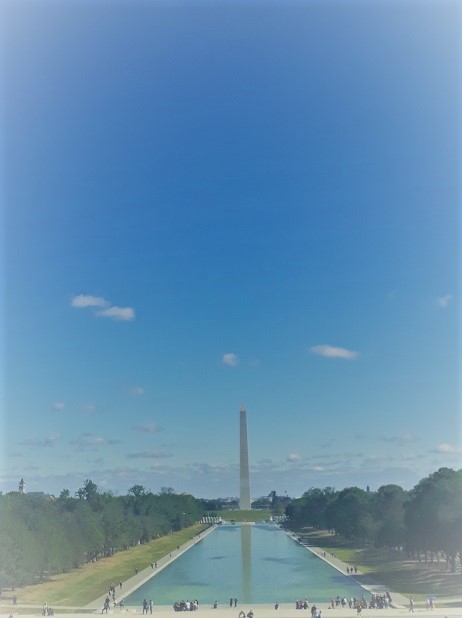
The Obelisk was built with marble, granite and sandstone and its reflection forms a beautiful image in the Water Mirror of the Constitution Gardens. To find out more information, just go to: https://www.nps.gov/wamo/index.htm
Speaking of Constitution Gardens, it is worth saying that it is a National Park that is between the Obelisk and the Lincoln Memorial, occupying an area of about 200 thousand m² and that was created in 1976 in honor of the Bicentennial of the American Revolution. There is no way to visit the park and not be enchanted by this beautiful Water Mirror!!!
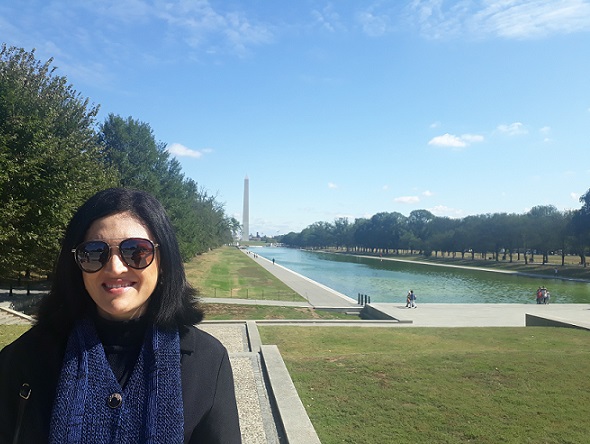
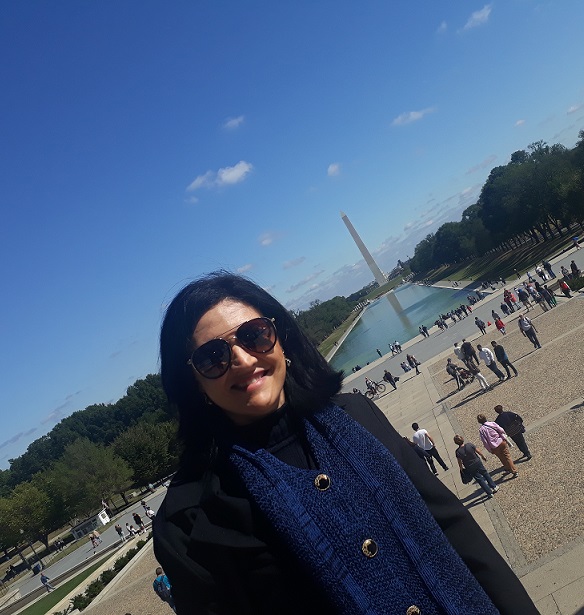
Within Constitution Gardens, we also had the opportunity to visit the Vietnam Veterans Memorial, which was built in 1982 to honor Vietnam War veterans and consists of three parts: “Vietnam Women’s Memorial ”(In honor of women),“Three Servicemen Statue” (work by Frederick Hart representing a white, a black and a Hispanic soldier) and the “Vietnam Veterans Memorial Wall (which was designed by the architect Maya Lin and consists of a 246 ft long black marble wall, on which are inscribed the names of all United States soldiers who died in the Vietnam War). More information is available on the website: https://www.nps.gov/vive/index.htm
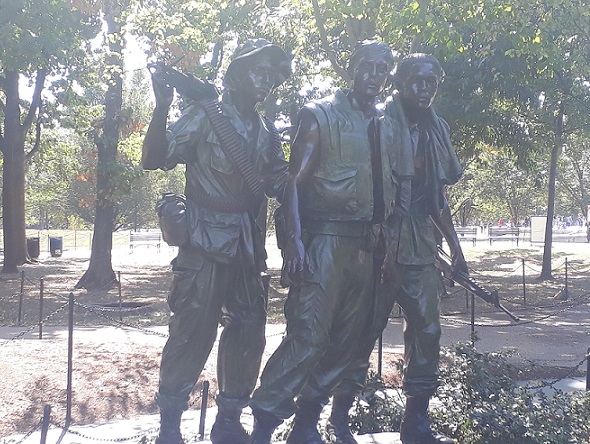


And across the Constitution Gardens is the Lincoln Memorial, which opened in 1922 to honor the 16th President of the United States, Abraham Lincoln, who was assassinated in 1865. The project was by architect Henry Bacon and inspired by the Parthenon temple in Athens (Greece) to make a connection between a defender of democracy and the birthplace of democracy. The Memorial is really beautiful !! It was built in marble and is 99 feet high, 190 feet long and 120 feet wide.
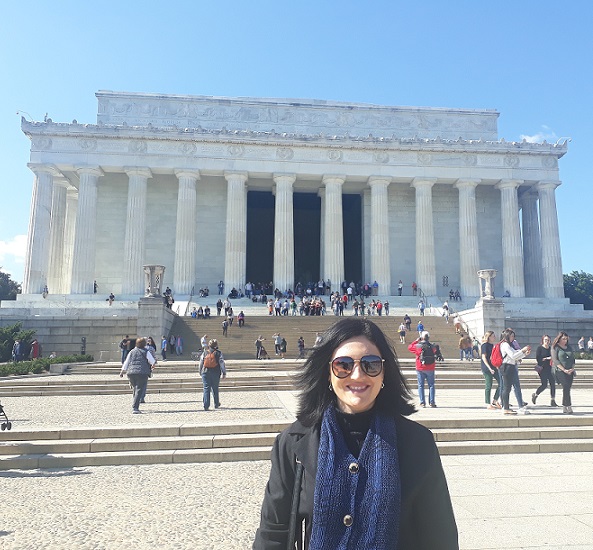


When visiting the interior of the Lincoln Memorial, we will learn more about Lincoln’s ideals of struggle, freedom and emancipation, how he contributed to the nation and also details about the construction of the Memorial. And if you want to know more information just access the website: https://www.nps.gov/linc/index.htm

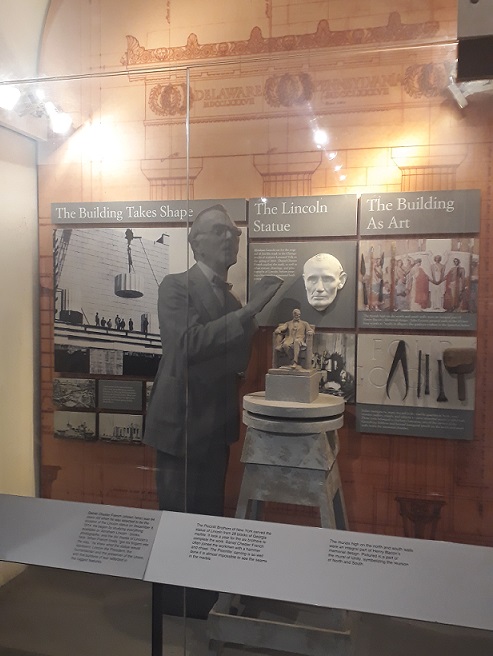
But rest assured that the visit is not over yet, we will now know the highlight of the Lincoln Memorial, which is in the central hall and is the Abraham Lincoln Statue, with approximately 19 feet high, presenting the Former President of the United States seated with a physiognomy of contemplation.

The design of the Abraham Lincoln Statue came from the sculptor Daniel Chester French, who wanted to portray Lincoln’s strength and claw together with his compassionate nature, doing this, symbolically, through his hands, leaving one closed and the other open. The execution of this project was the responsibility of the Piccirilli brothers, but always under the supervision of the author, and it took four years to complete. It was built in marble, is about 19 feet wide, weighs 175 tons and stands on a pedestal, also made of marble. More details about the statue are on the website: https://www.nps.gov/linc/learn/historyculture/statue.htm


Leaving there, we went to visit the Korean War Veterans Memorial, made to honor the combatants who served in the Korean War. The Memorial was inaugurated (or dedicated, as they prefer to call it) on July 27, 1995 (date of the 42nd anniversary of the armistice that ended the war).

Korean War Veterans Memorial has a triangular part containing 19 statues representing an American Patrol Squadron, composing the work “The Column“. The statues are made of stainless steel, were created by World War II veteran Frank Gaylord and the bushes where they are and some obstacles along the way symbolize the uneven Correia relief.


Very close to the statues is The Mural Wall, which was created by Louis Nelson and where sandblasted images of soldiers and other people involved in the Korean War, as well as equipment, were recorded. The work is beautiful and the mixture between the reflected statues and the faces engraved on the granite causes a surprising effect.



They also make up the Korean War Veterans Memorial, the United Nations Wall, which is a smaller wall than The Mural Wall, which lists the 22 United Nations countries that sent troops and medical support to the War and the “Pool of Remembrance“¸that is a shallow tank, surrounded by a forest, and which bears various inscriptions, among them the number of soldiers killed in the war. To find out more details about this memorial, just go to: https://www.nps.gov/kowa/index.htm


I know you must be missing a place and wondering when I’m going to talk about one of Washington D.C.’s top postcards, don’t you? So, cheer up because the time has come to visit the famous White House!!!


White House is the official residence of the President of the United States and also the seat of the country’s Executive Branch. It was built between 1792 and 1800 and the project was by Irishman James Hoban, in Georgian style, and was later expanded until it reached the current model. In 1814, the White House suffered a fire caused by a British attack during the Anglo-American War of 1812, but was subsequently rebuilt. And it is one of the hottest tourist spots in the country, reaching about three thousand visitors a day, after all there is no way to go to Washington D.C and not go through the White House.

But the changes in the White House do not stop there, former President Donald Trump has increased the size of the bars, so these sidings that appear in the photos. And because it is one of the most powerful places in the world, it is also the target of constant demonstrations and protests in its surroundings. To find out more about the White House, just take a look at the website: https://www.whitehouse.gov/
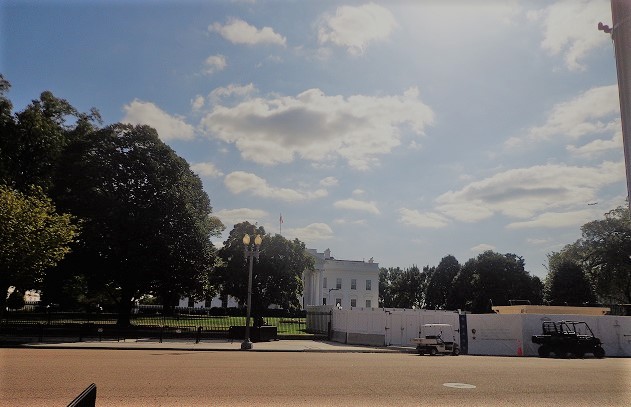
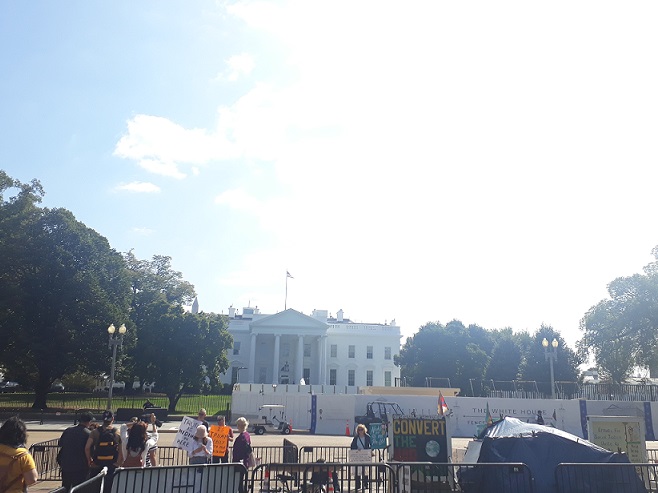
And very close to the White House, about 1 mile away, is another building that is a postcard from Washington D.C.: the U.S Capitol/ United States Capitol, which is beautiful and certainly worth including in your script.
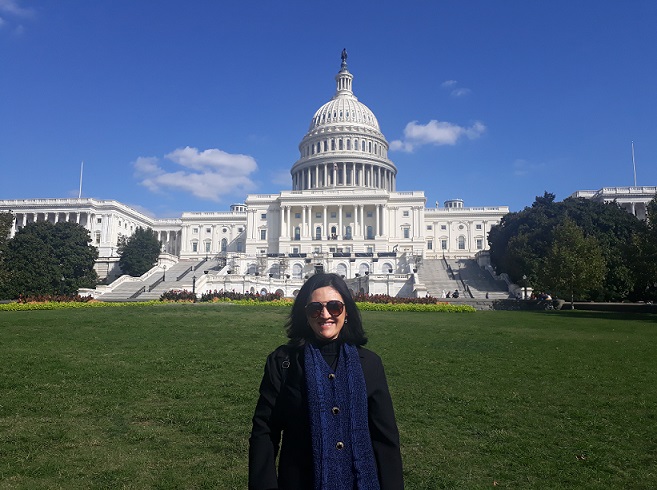
The Capitol is the legislative center of the United States, where meetings of Congress take place, which is composed of the Senate and the House of Representatives. Its construction adopts the neoclassical style and started in 1793, the first part was inaugurated in 1800 and there was more expansion in 1850. The initial project was by William Thornton, then underwent changes by Stephen Hallet, Benjamin Latrobe, Thomas U. Walter, among other architects. Currently, the Capitol consists of a central dome and two wings: to the north (where the Senate is) and to the south (where the House of Representatives is) and above the dome there is a bronze statue called the “Statue of Liberty” .
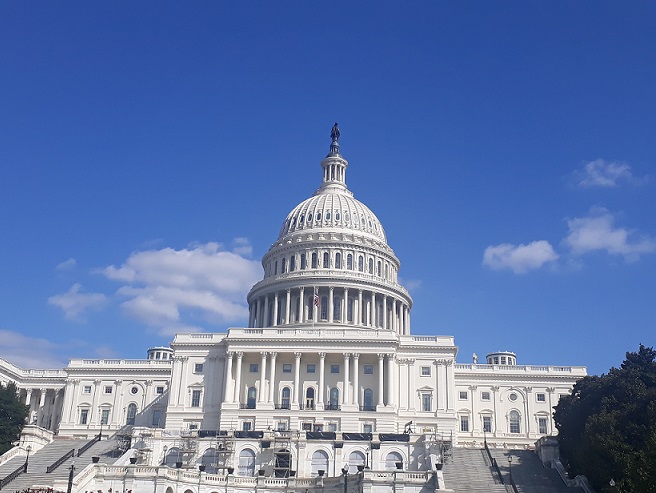

Capitol is the symbol of democracy in the country and has been the target of several attacks, from bomb explosions to armed attacks to security guards, narrowly escaping an attack on September 11, 2001 (which only did not occur because the 93 United Airlines flight, which was headed for the Capitol, crashed in Pennsylvania before, after passengers tried to take control of the plane when they ran into terrorists) and arriving at the most recent, which was on January 6, 2021, when supporters of former President Donald Trump invaded the Capitol in protest for the electoral victory of the current President of the United States, Joe Biden.
To learn more about Capitol, visit: https://www.visitthecapitol.gov/

We are now going to our last stop in Washington D.C, which was at the National Air and Space Museum, which as its name says is dedicated to the air and space environment and has one of the largest collections of aircraft and spacecraft (most of which are original) in the world.
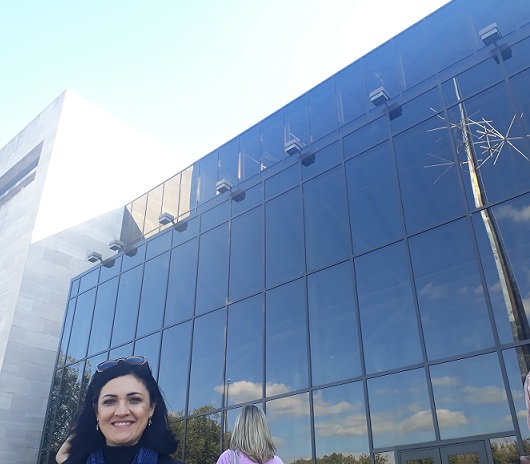

Visiting…. 
National Air and Space Museum
National Air and Space Museum is part of the Smithsonian Institute, opened in 1976, designed by the architect Gyo Obata and currently has a collection of about 50,000 artifacts, which fill our eyes as we go through the spaces of the Museum.
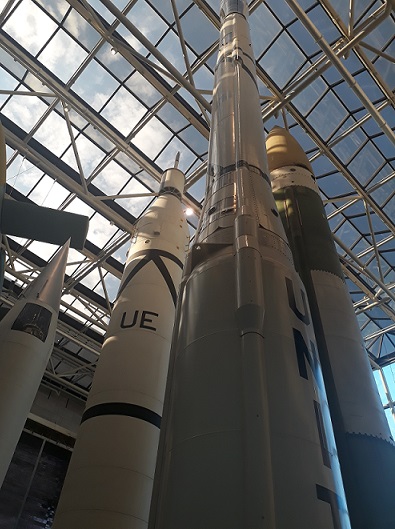

Astronauts… 


And planes
On this visit to the National Air and Space Museum we had the opportunity to visit the Mercury Frienship 7 spacecraft, used in the Mission that allowed astronaut John Glenn to be the first American to fly in Earth orbit. We also met Gemini IV of the Mission, which carried out the first North American spacewalk with astronaut Ed White. And the Viking Lander, who was a terrifier, sent to study the surface of Mars.



One of the parts that most caught my attention at the National Air and Space Museum was to enter a Space Capsule and see what the bed¸ looks like that is suspended on the wall and has accessories to “arrest” the astronauts. Have you ever imagined the sensation of having to sleep with your arms and legs tied to avoid floating around the ship? Astronaut food is also very interesting, the cupboards, the bathroom, in short, is a wonderful learning experience.



Cupboards 
Bathroom

National Air and Space Museum also has a room that takes us back to the beginnings of Aviation…
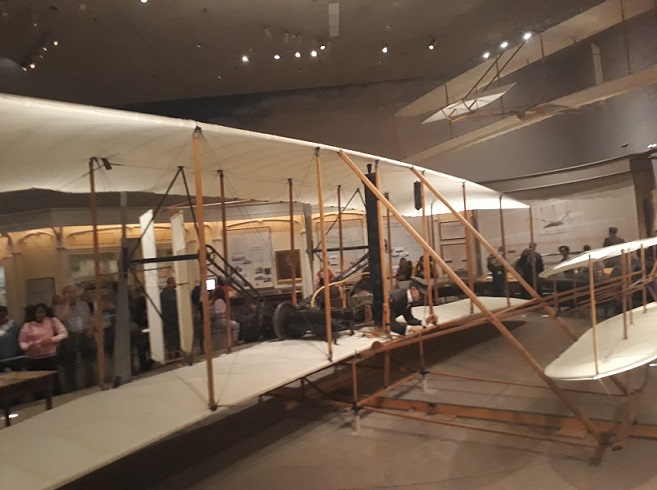

Recalling that the National Air and Space Museum is at 600, Independence Ave SW and to find out more information just access: https://airandspace.si.edu/ . And it is also possible to take a virtual tour so you can feel what the visit is like there, accessing the link: https://artsandculture.google.com/streetview/national-air-and-space-museum-washington-dc-second-floor/mAGIjNwvdyVBNA?sv_lng=-77.01985119124066&sv_lat=38.88814141871478&sv_h=157.8&sv_p=-13.299999999999997&sv_pid=7Tb8VlE8GxmLwjrXMB8XCw&sv_z=1

Our tour of Washington D.C. ending here… I sincerely thank you for your company!!! If you haven’t seen it yet or want to remember how that trip went from beginning to end just click on the side, in the experience you want to know, from Canada, passing through New York, until you reach today’s tour.
And remembering that if you liked this post, share it with your friends so they can have fun too, and follow our social networks to know firsthand what is new: Instagram (@cadaviagemumabagagem) and Facebook (https://www.facebook.com/cadaviagemumabagagem/ ) and subscribe to our Youtube channel (“Cada Viagem uma Bagagem”): https://www.youtube.com/channel/UC5Q29-MYuWjvPH__wWhF42A


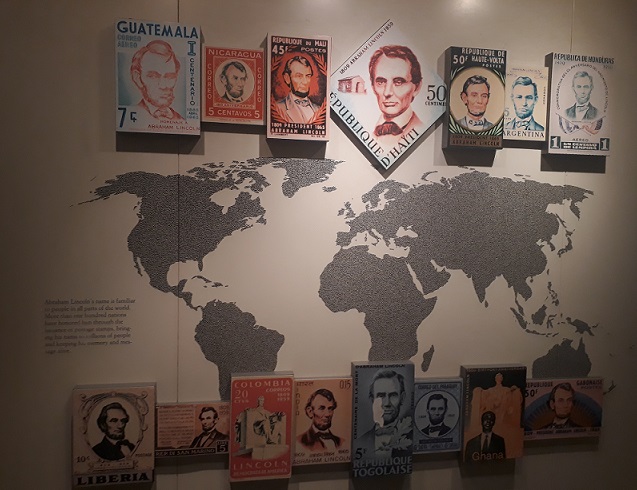
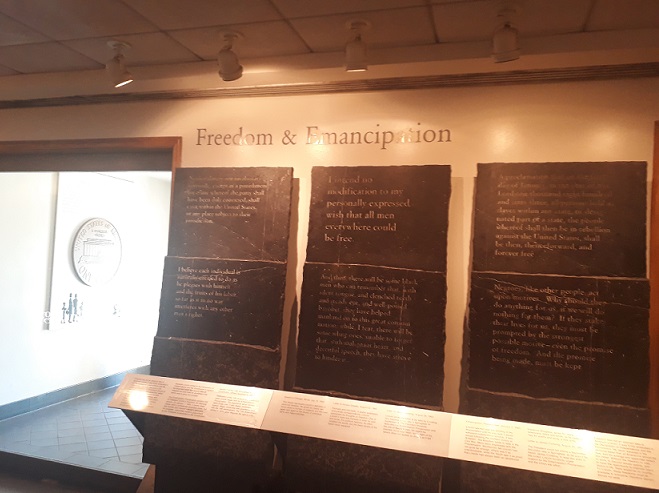
Uau!! Que incrível este lugar! Não fazia ideia que era tão rico em história e em curiosidades também. Amei as histórias e as obras de arte. Geralmente lugares que relatam a guerra tem um clima pesado, mas vi que neste caso eles souberam explorar o assunto baseado na honra e mérito desses heróis! Ah e o parque com o espelho d’água é simplesmente incrível! Acredito que foi lá que gravaram uma das cenas de um dos meus filmes favoritos “Forest Gun”.
Excelente matéria! Parabéns!
Muuuuuito obrigada, Jack!!!! Fico muito feliz que tenha gostado da matéria!!! É um lugar que vale a pena conhecer e como você bem observou, eles conseguem abordar a guerra de uma maneira diferente e com lindas formas de homenagem!!! Foi lá que gravaram esse filme sim e “Mulher-Maravilha 1984” também teve cenas gravadas em Washington. Gratidão por tudo!!!??????